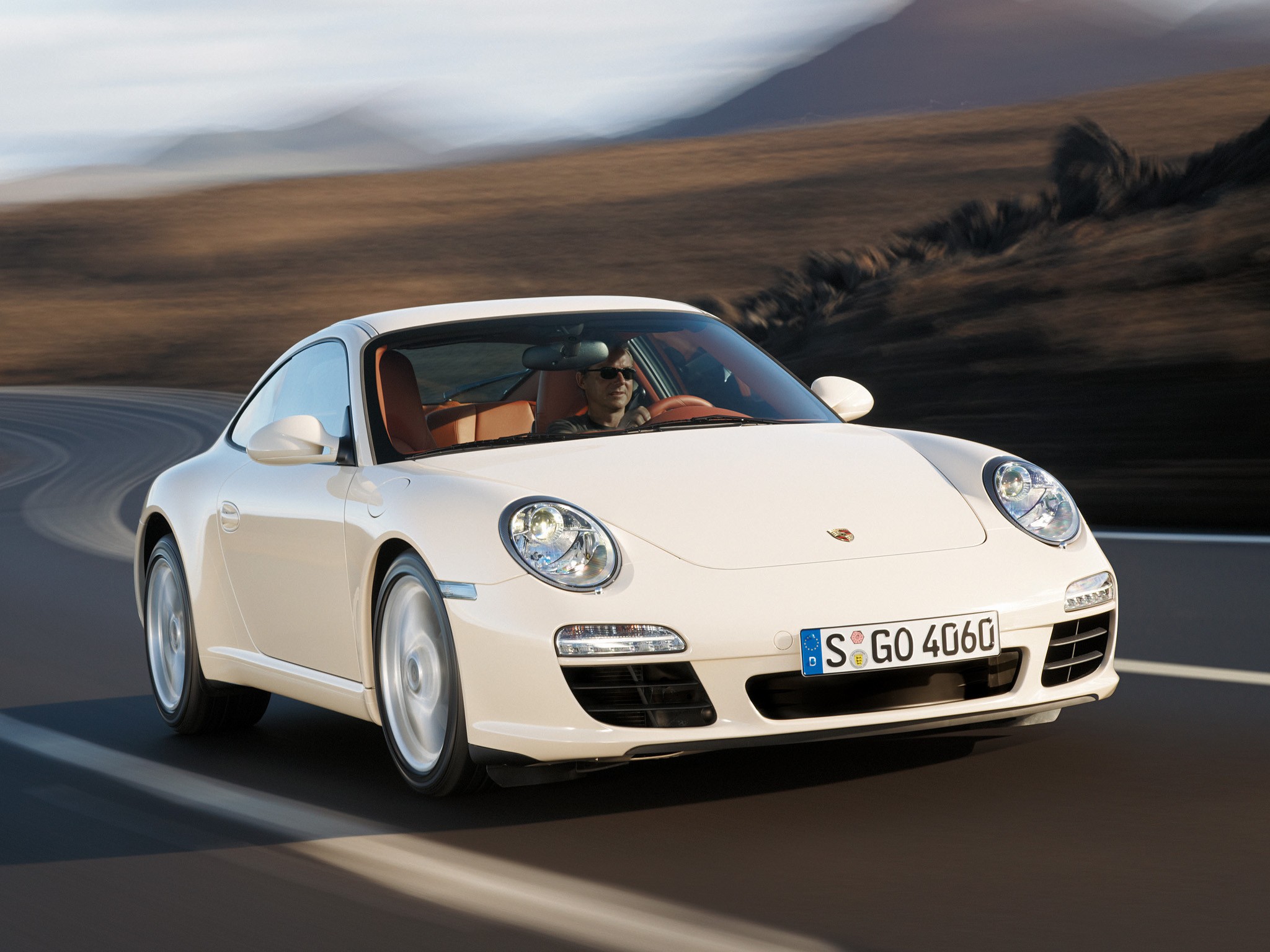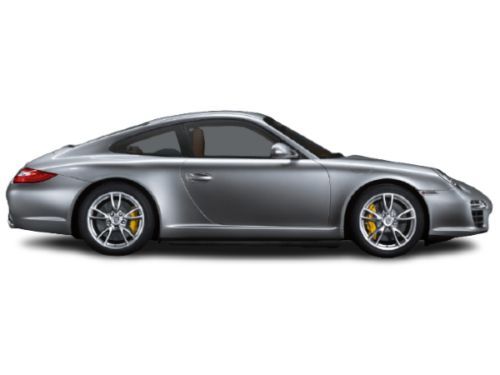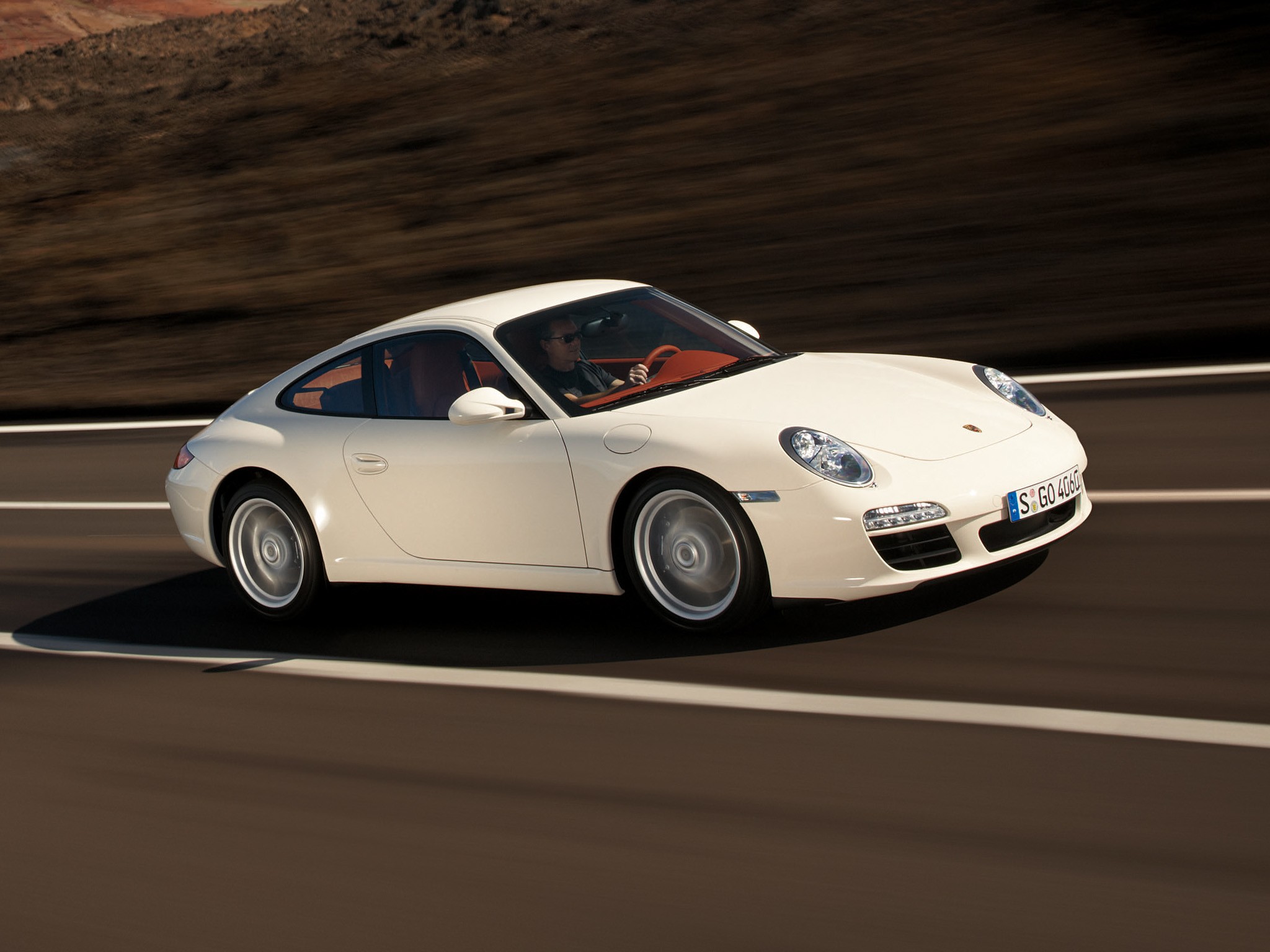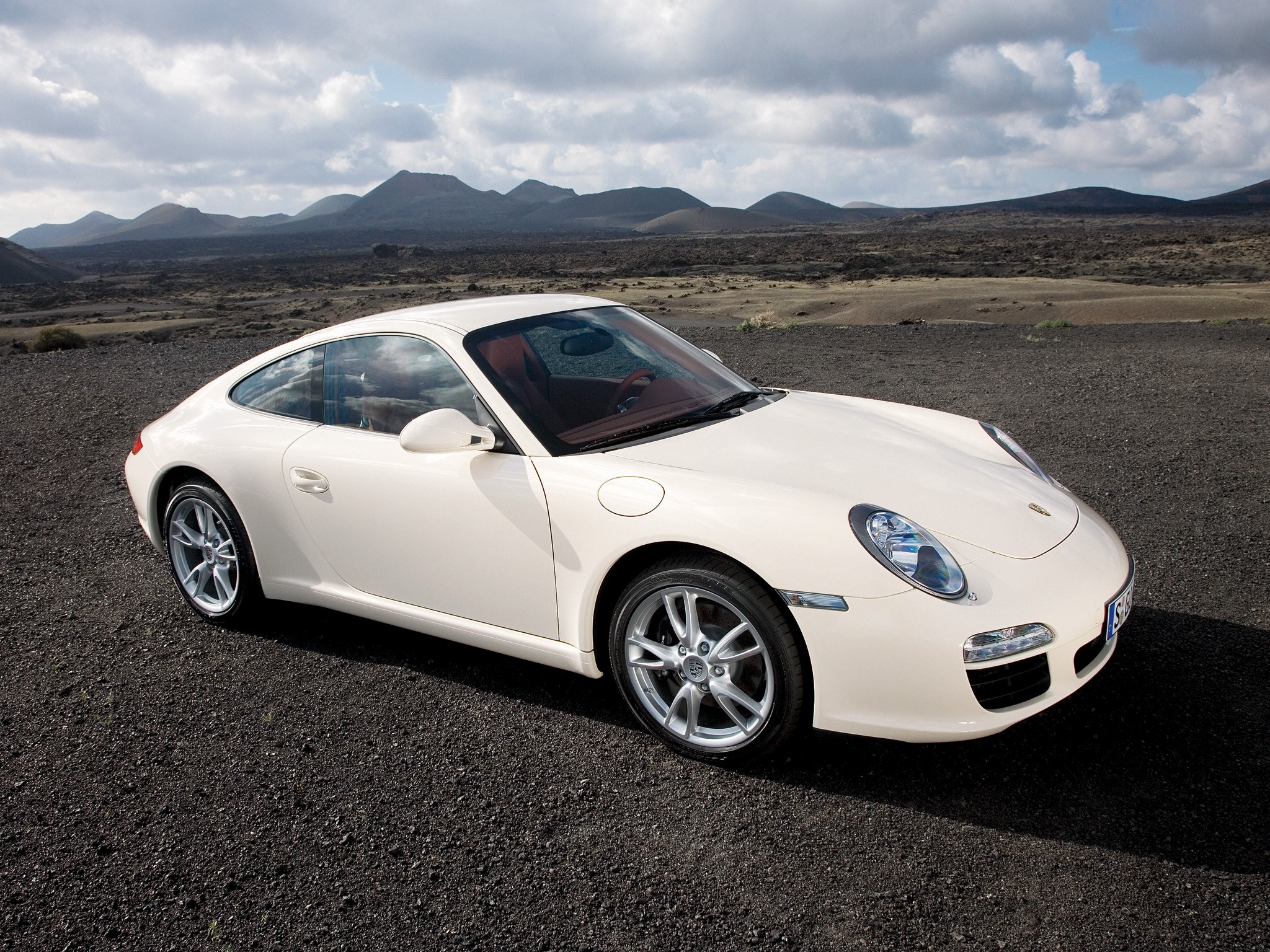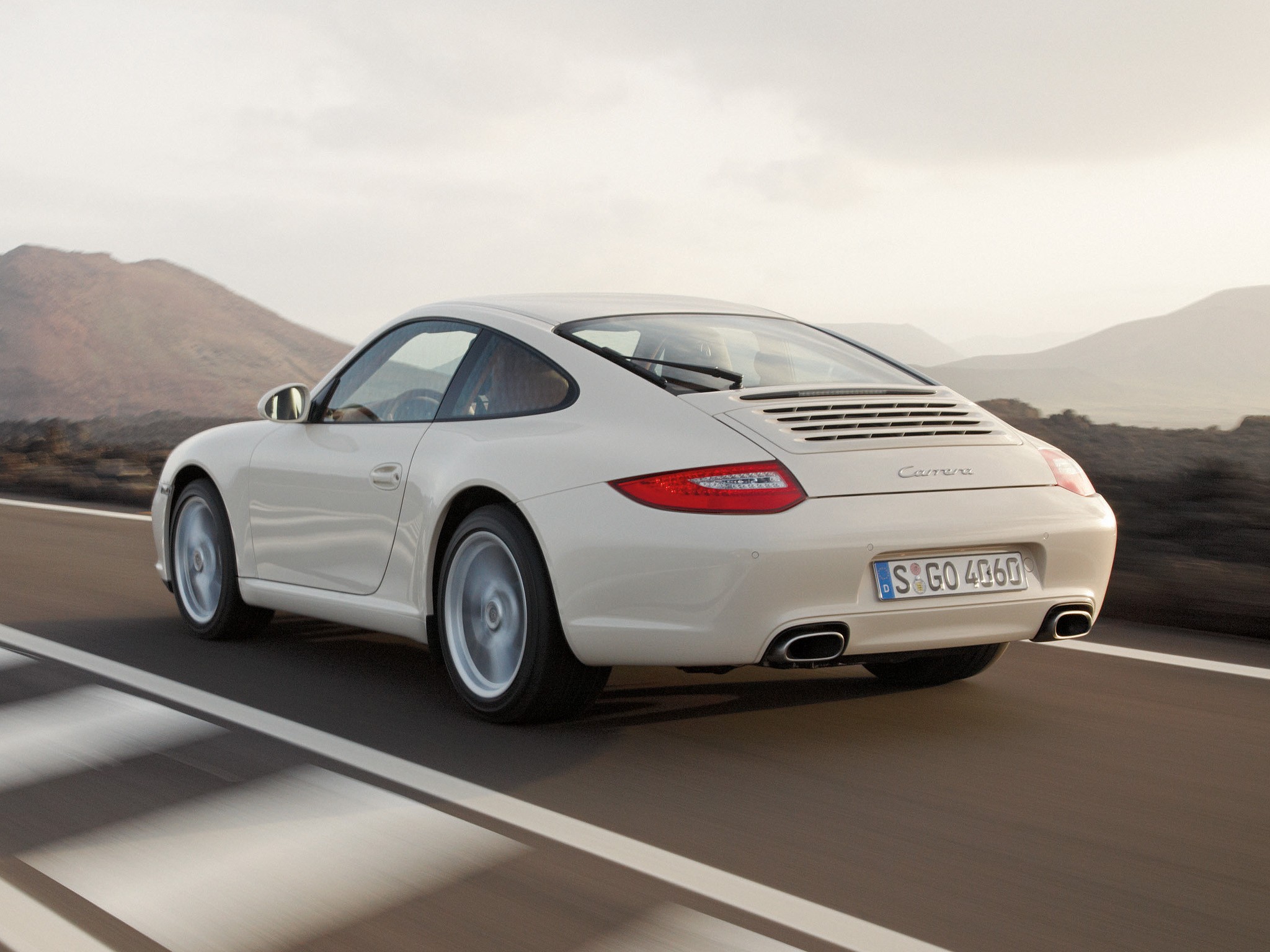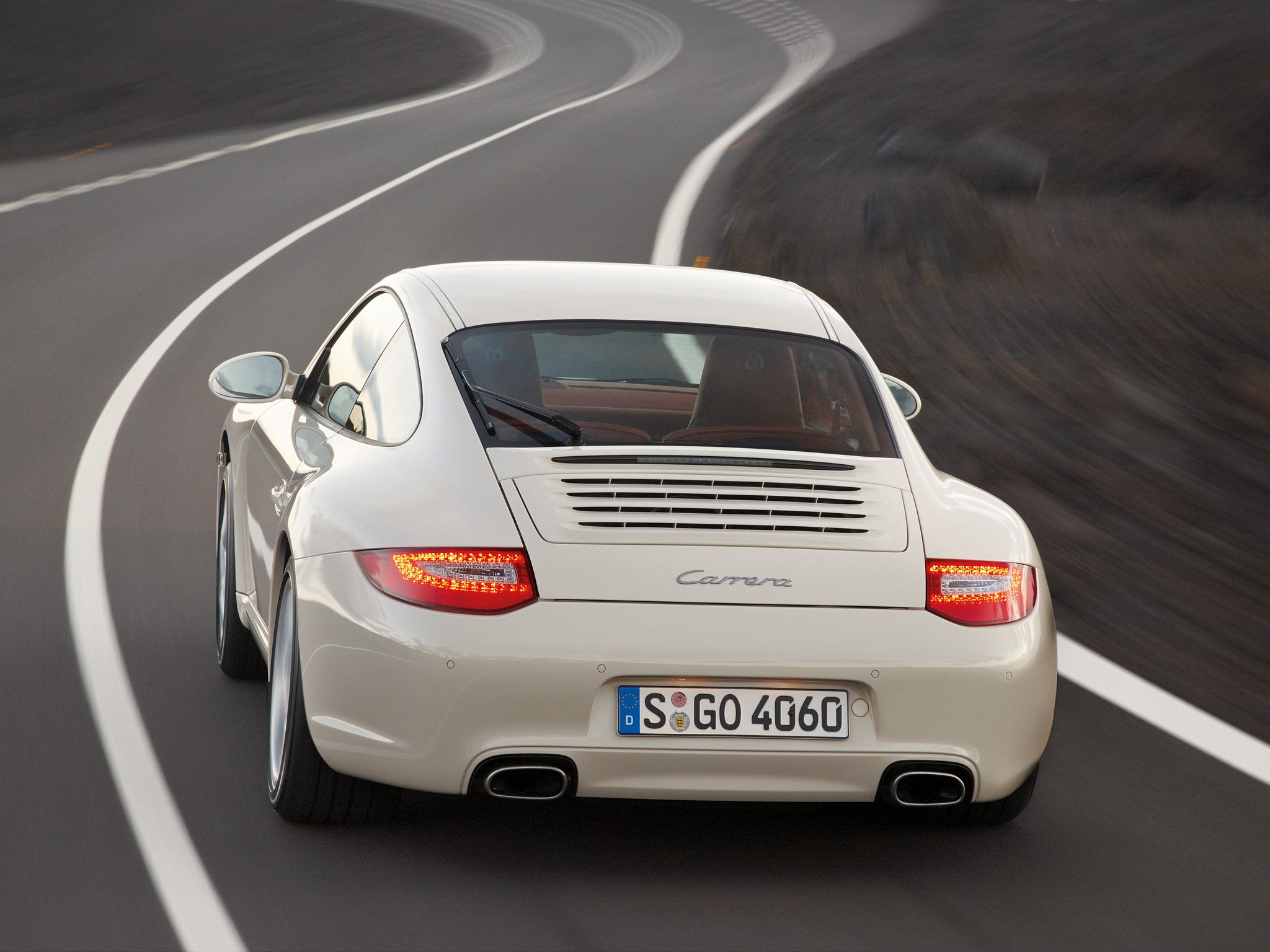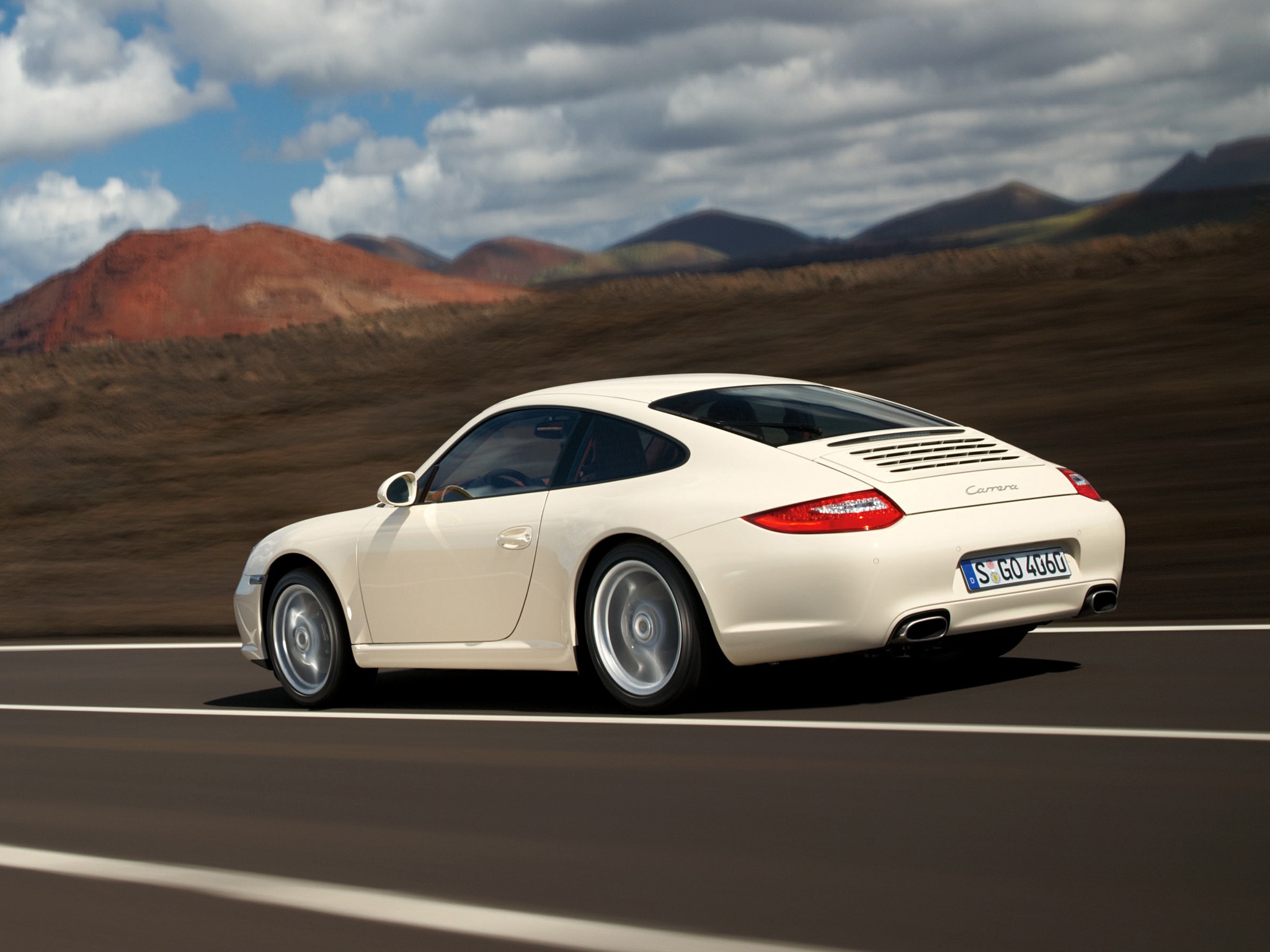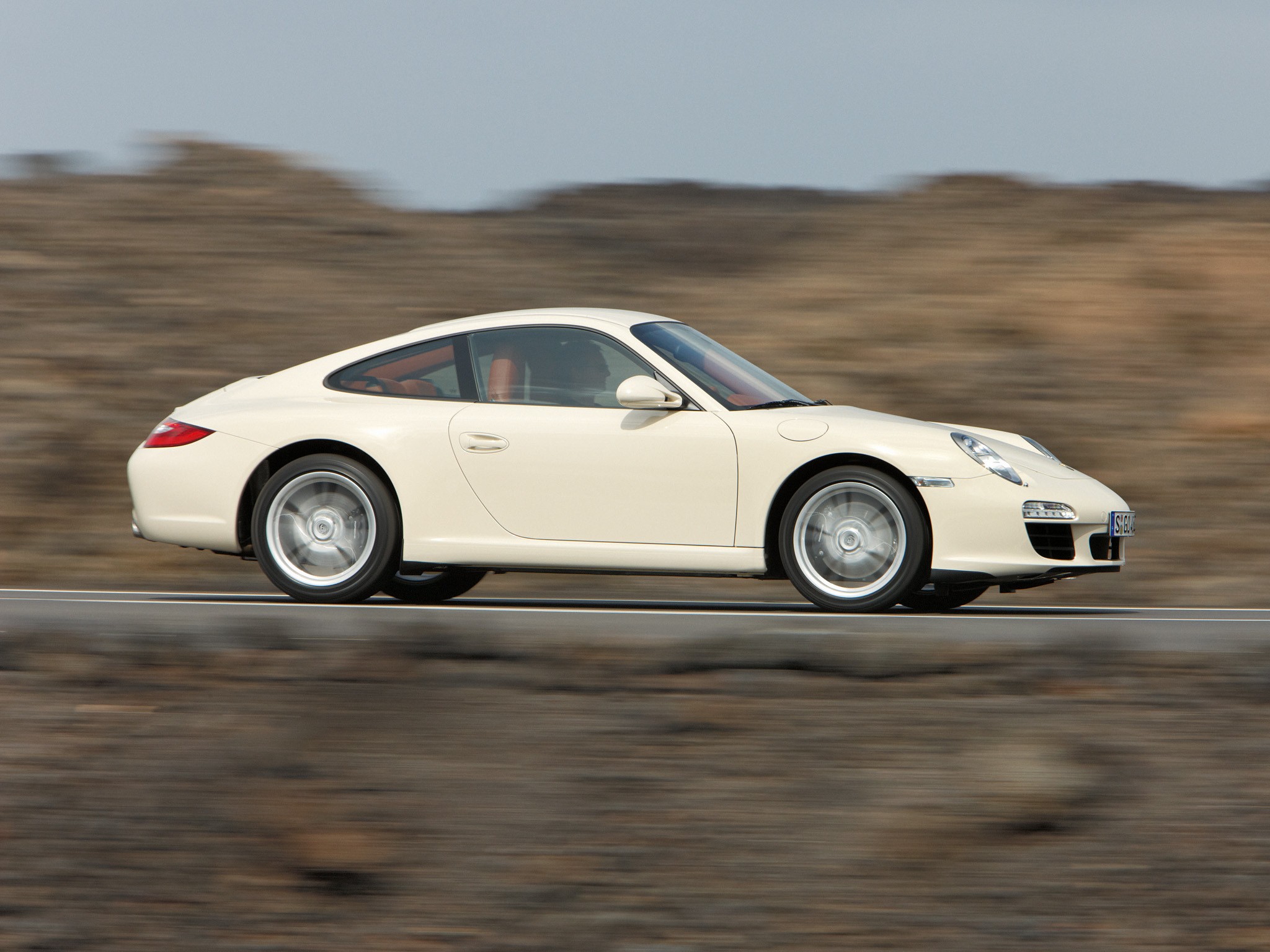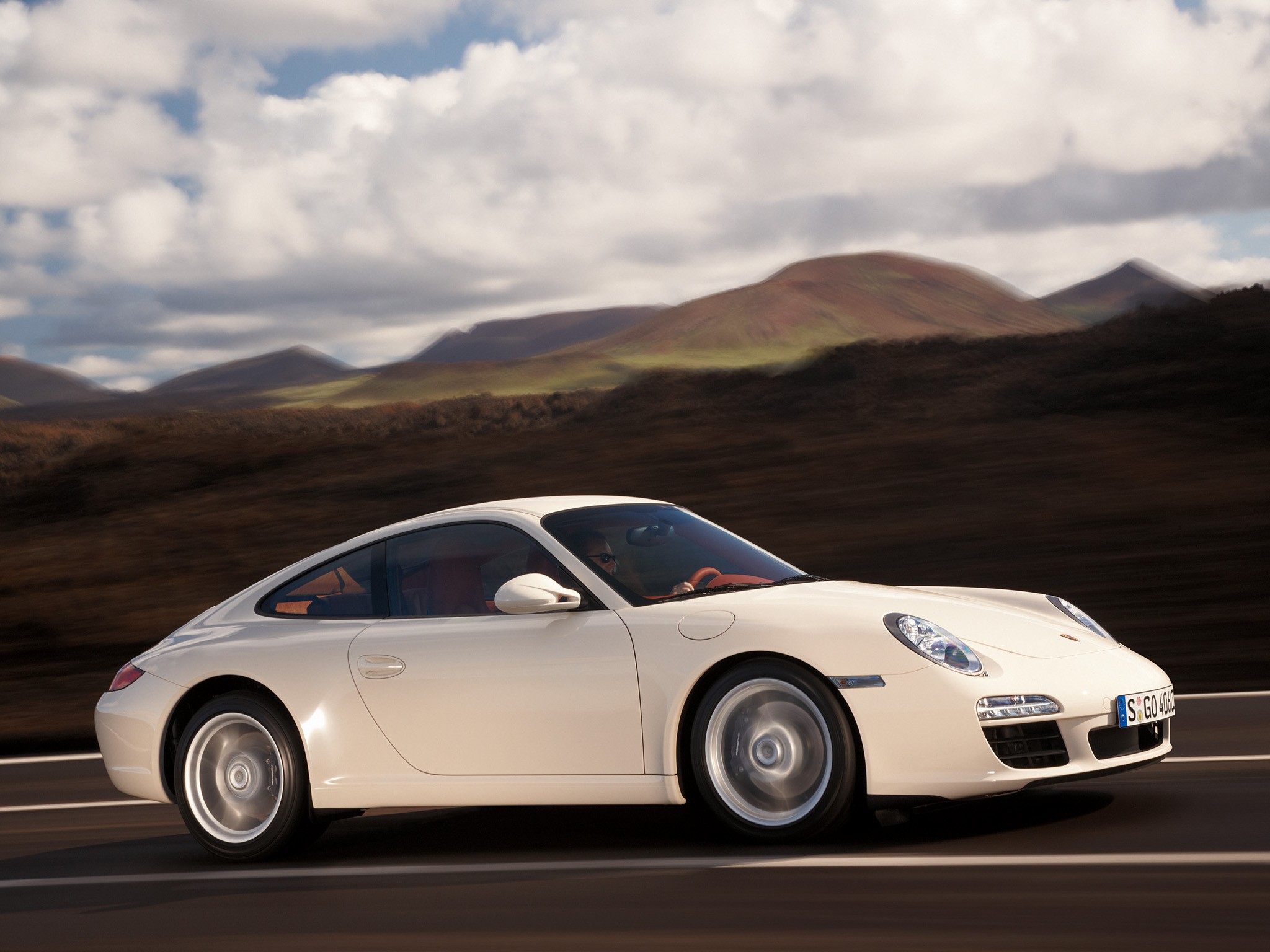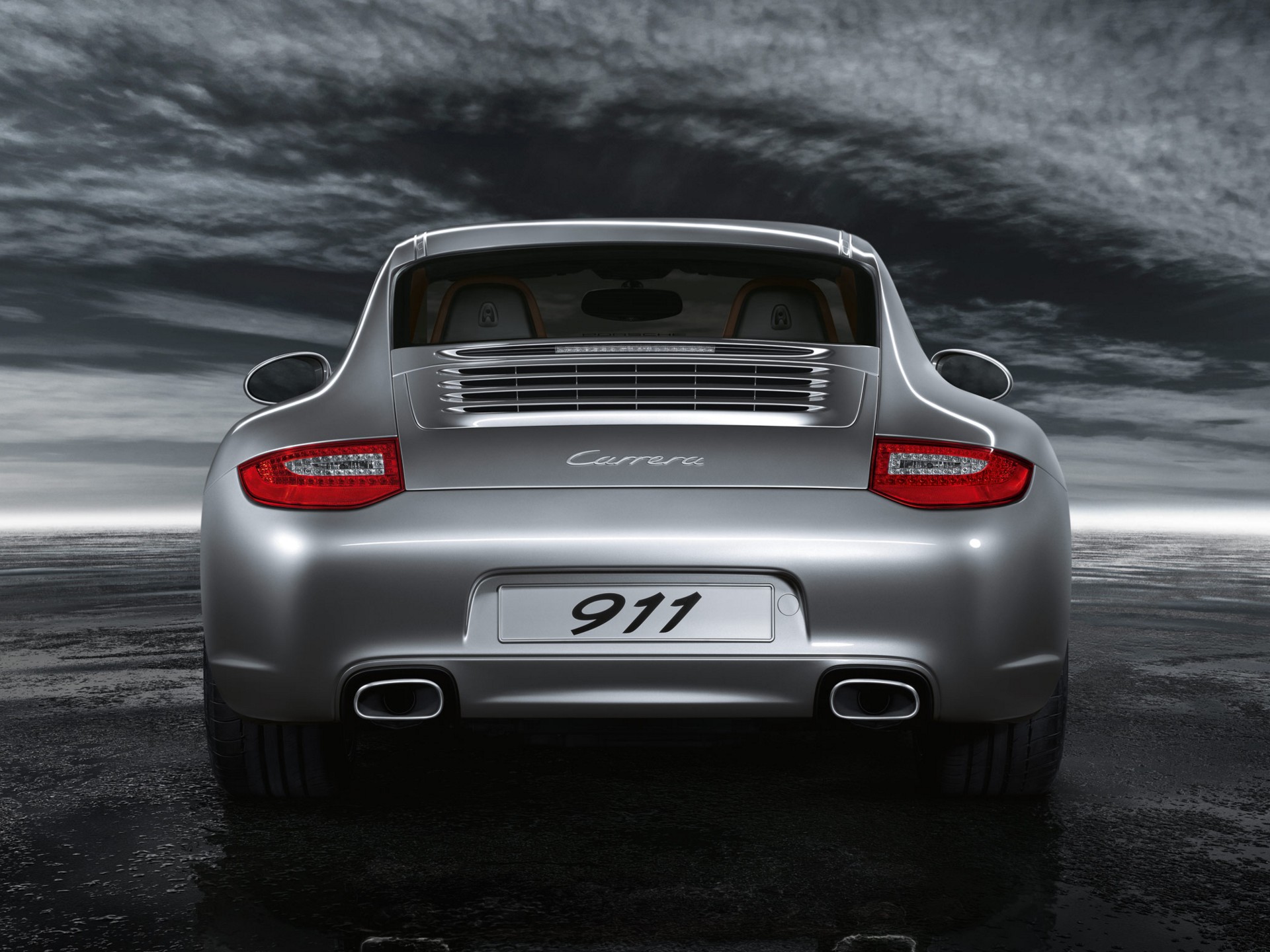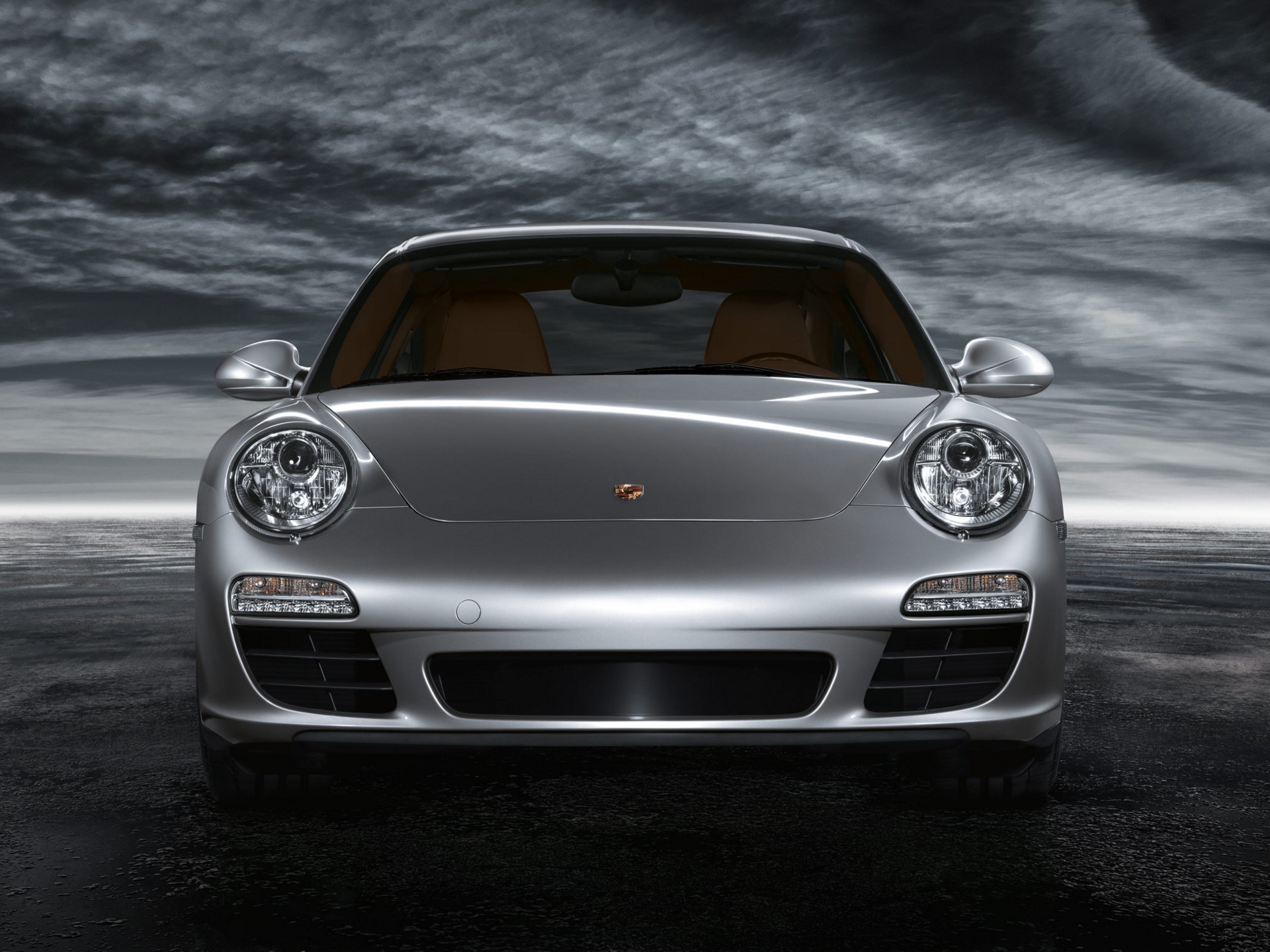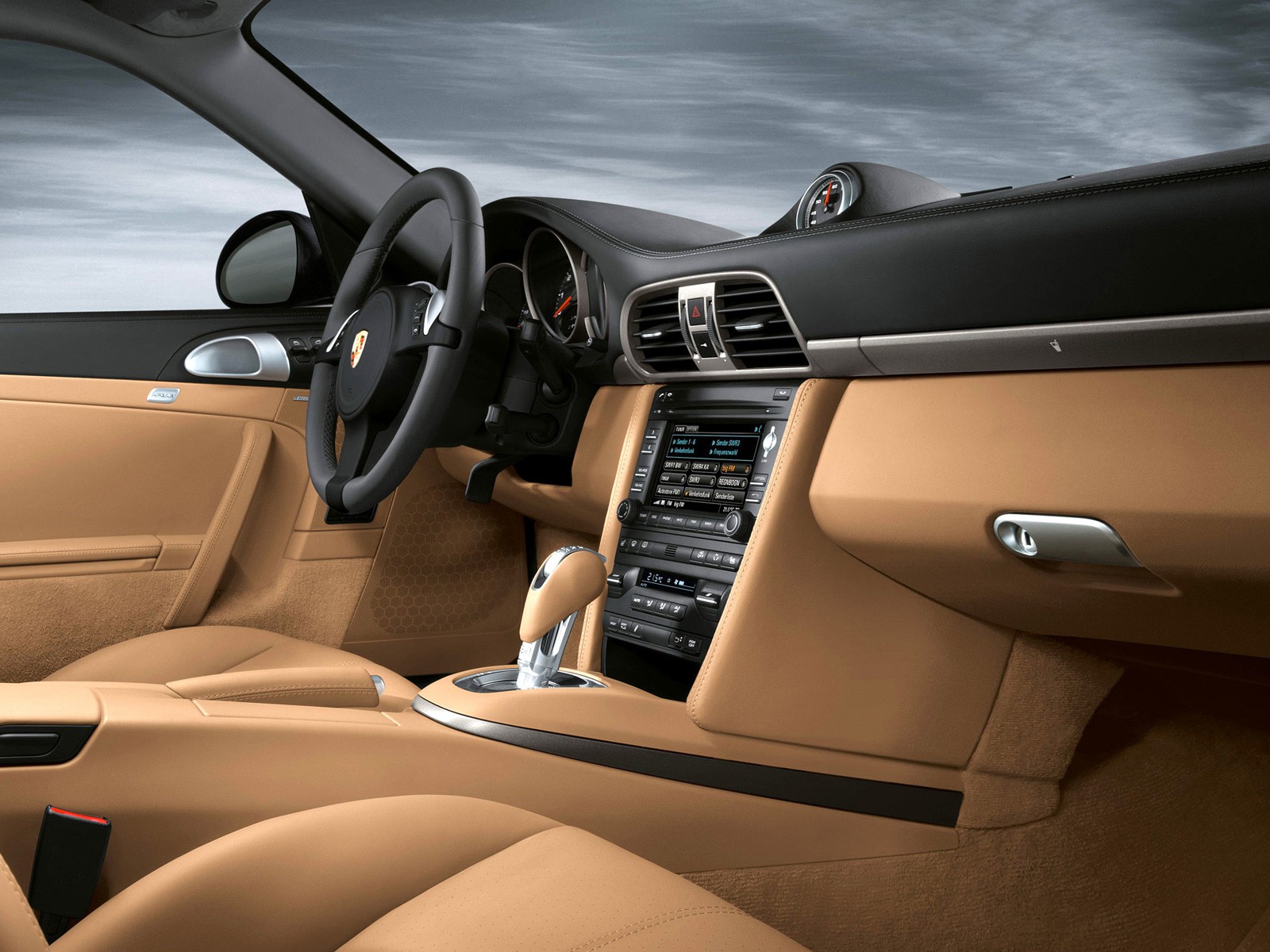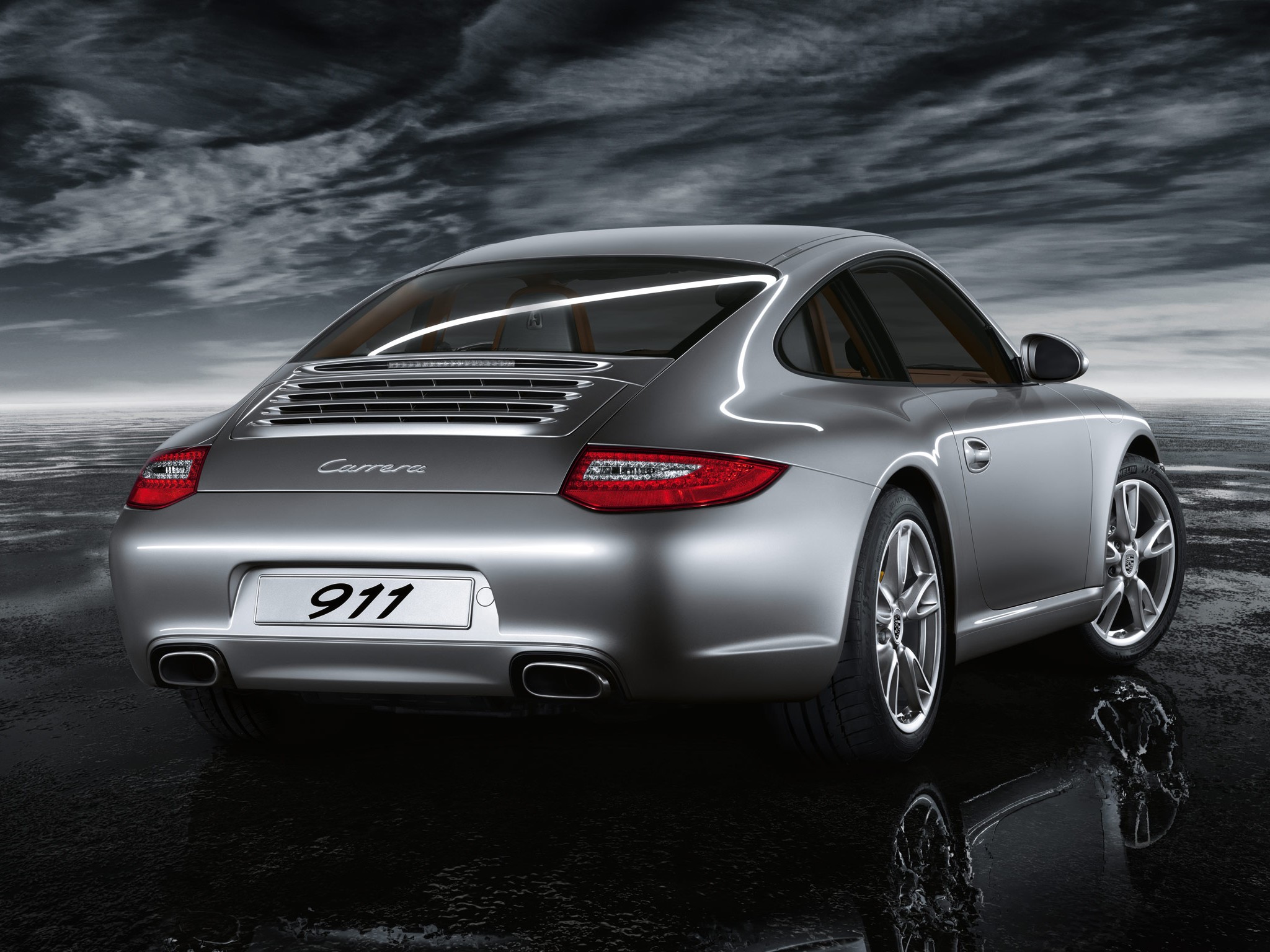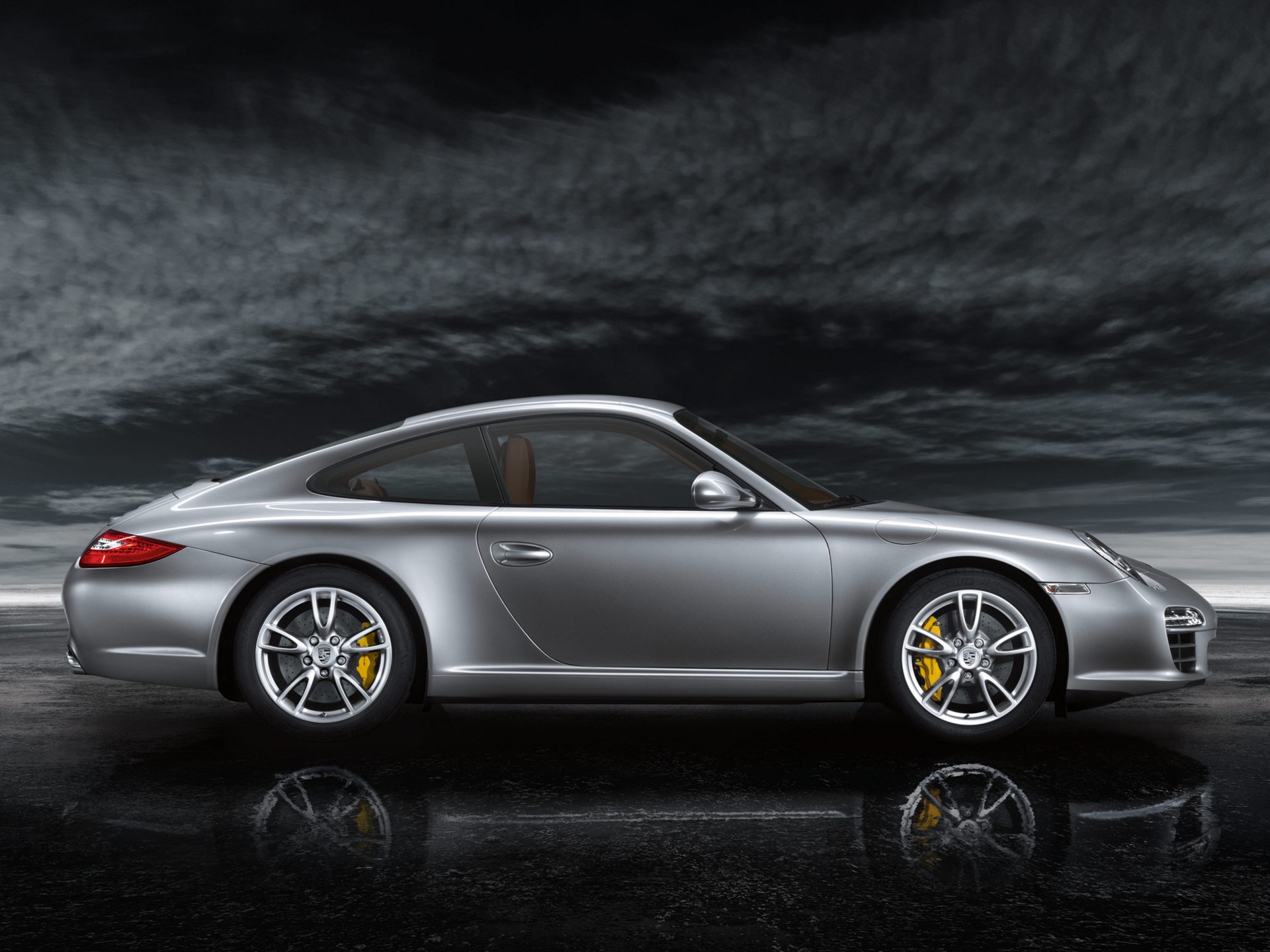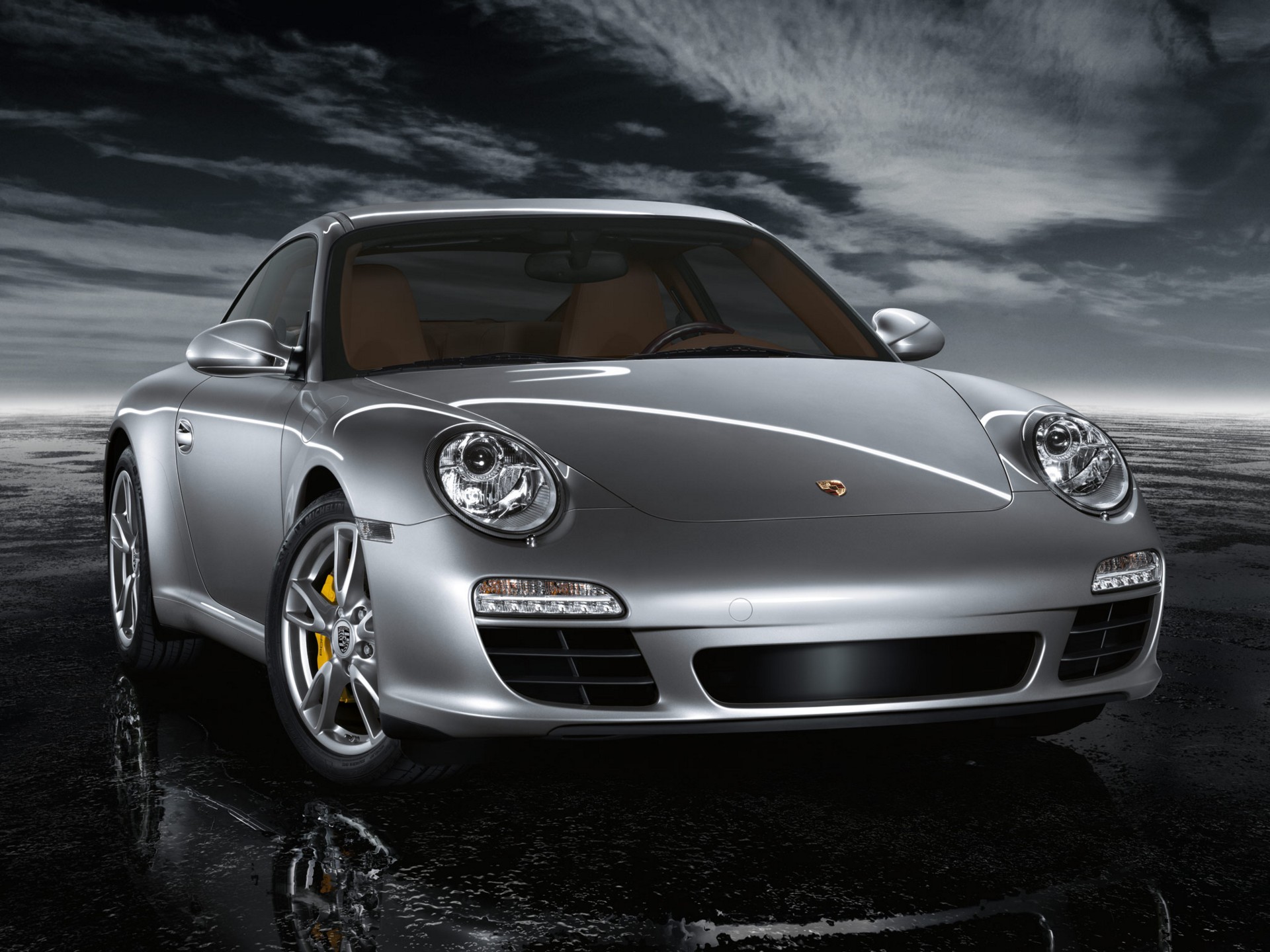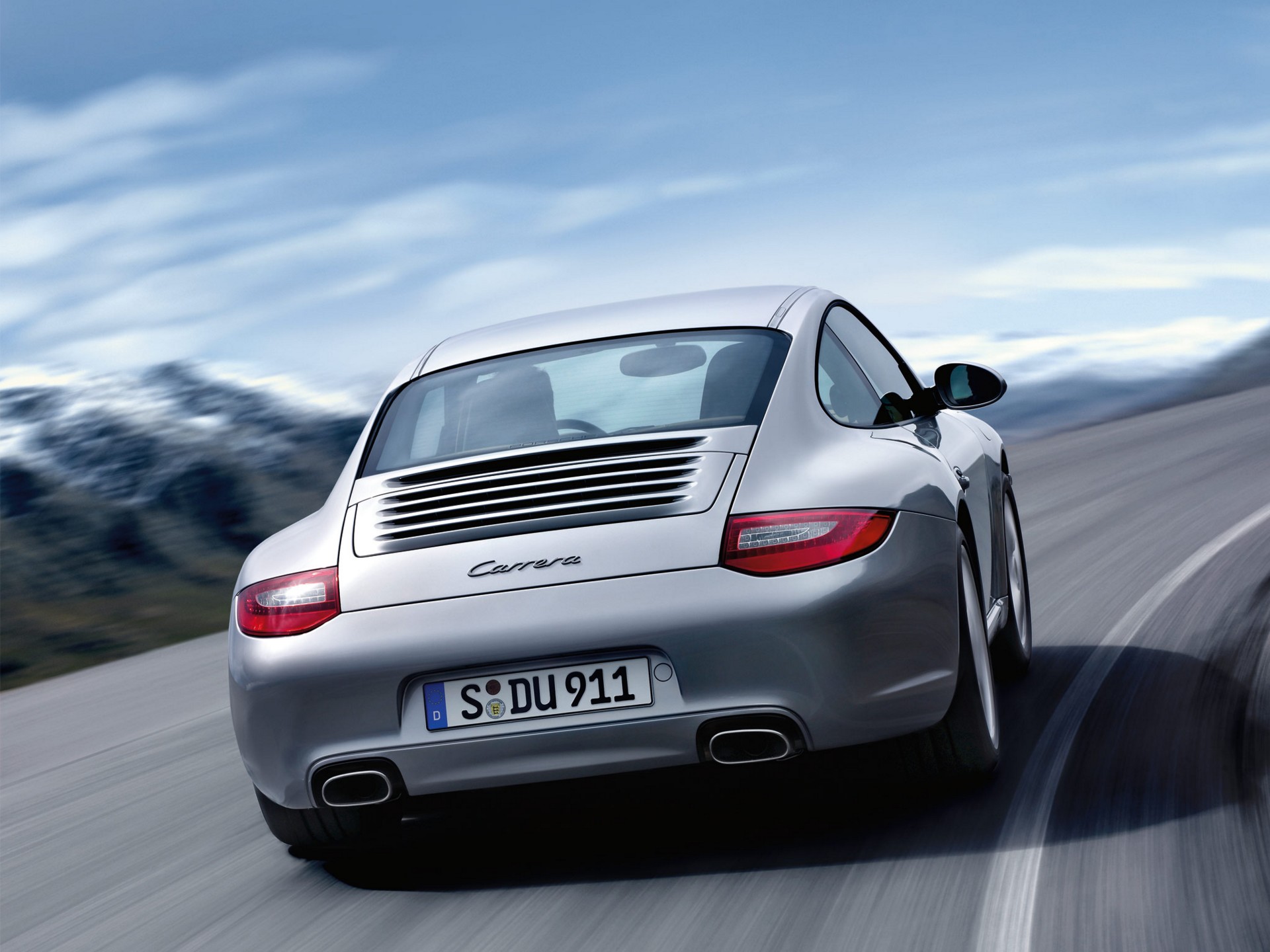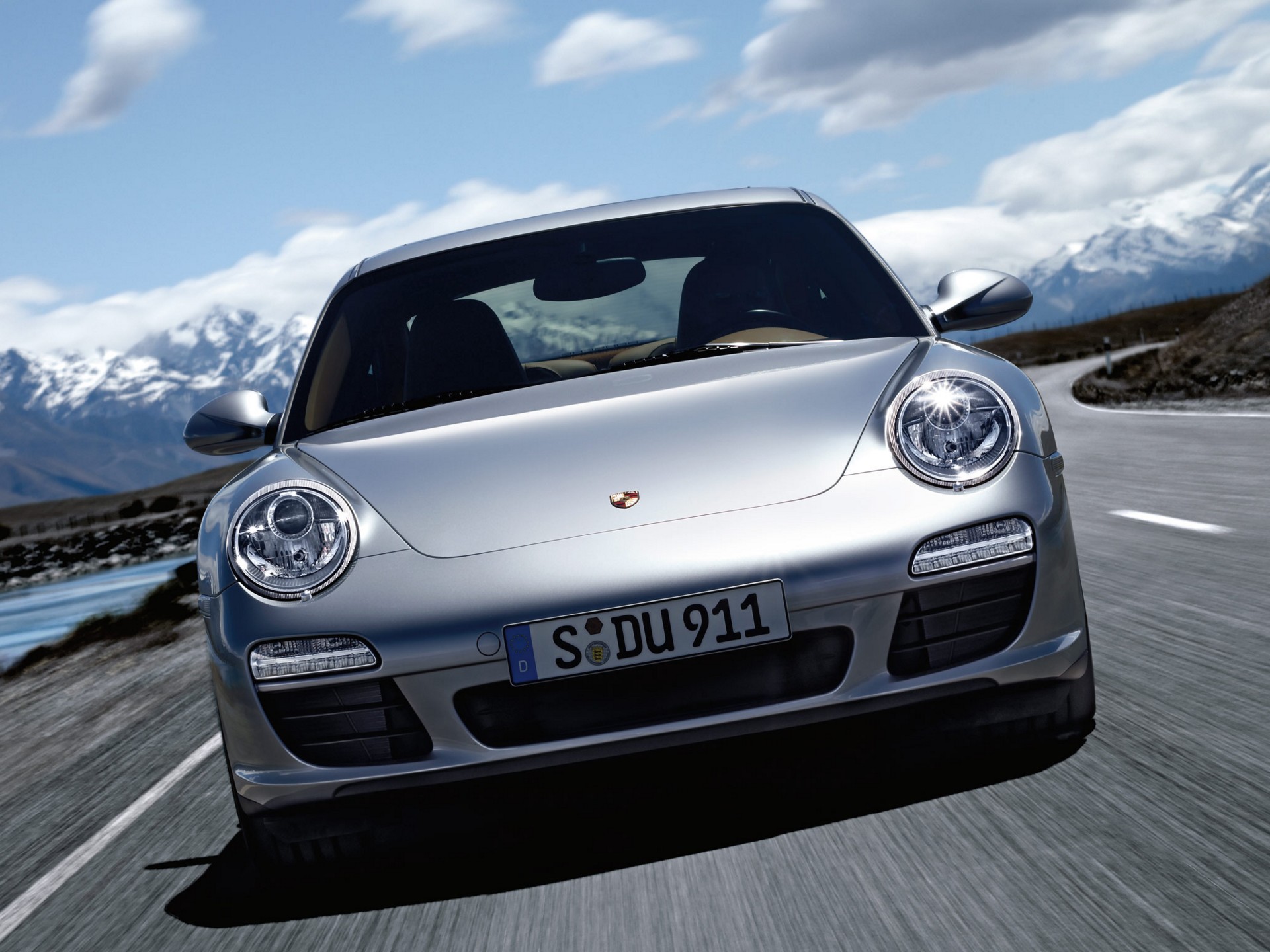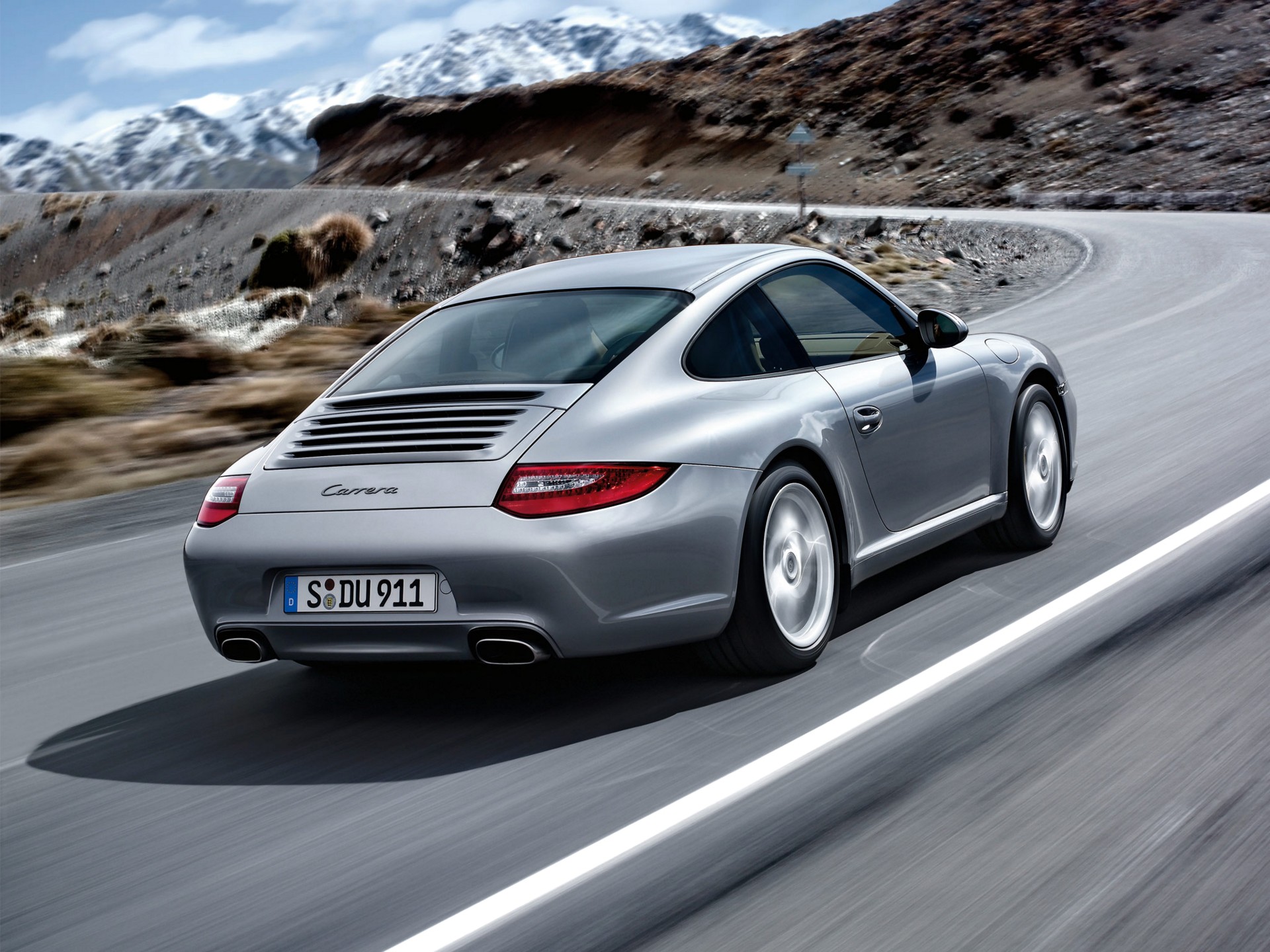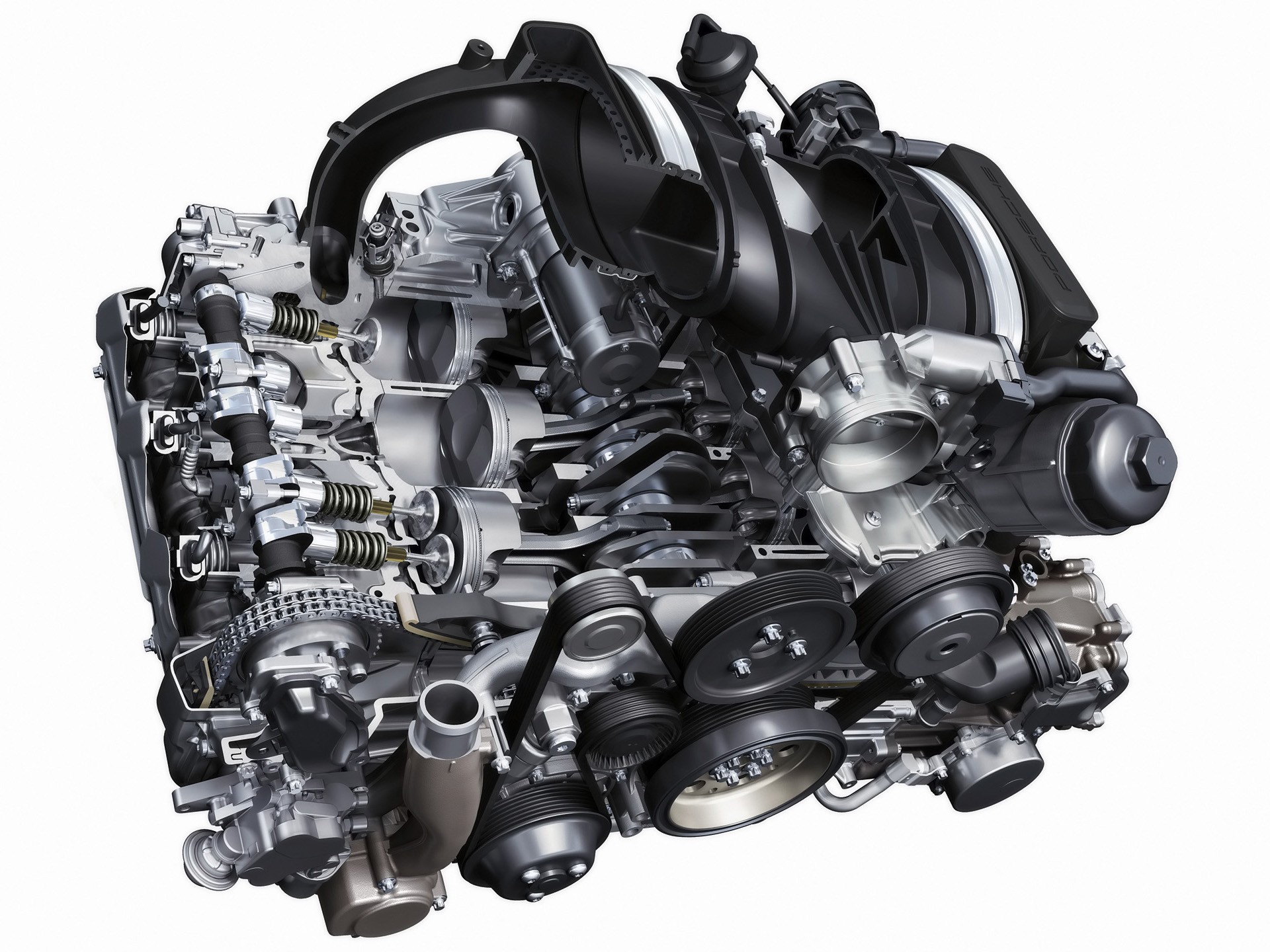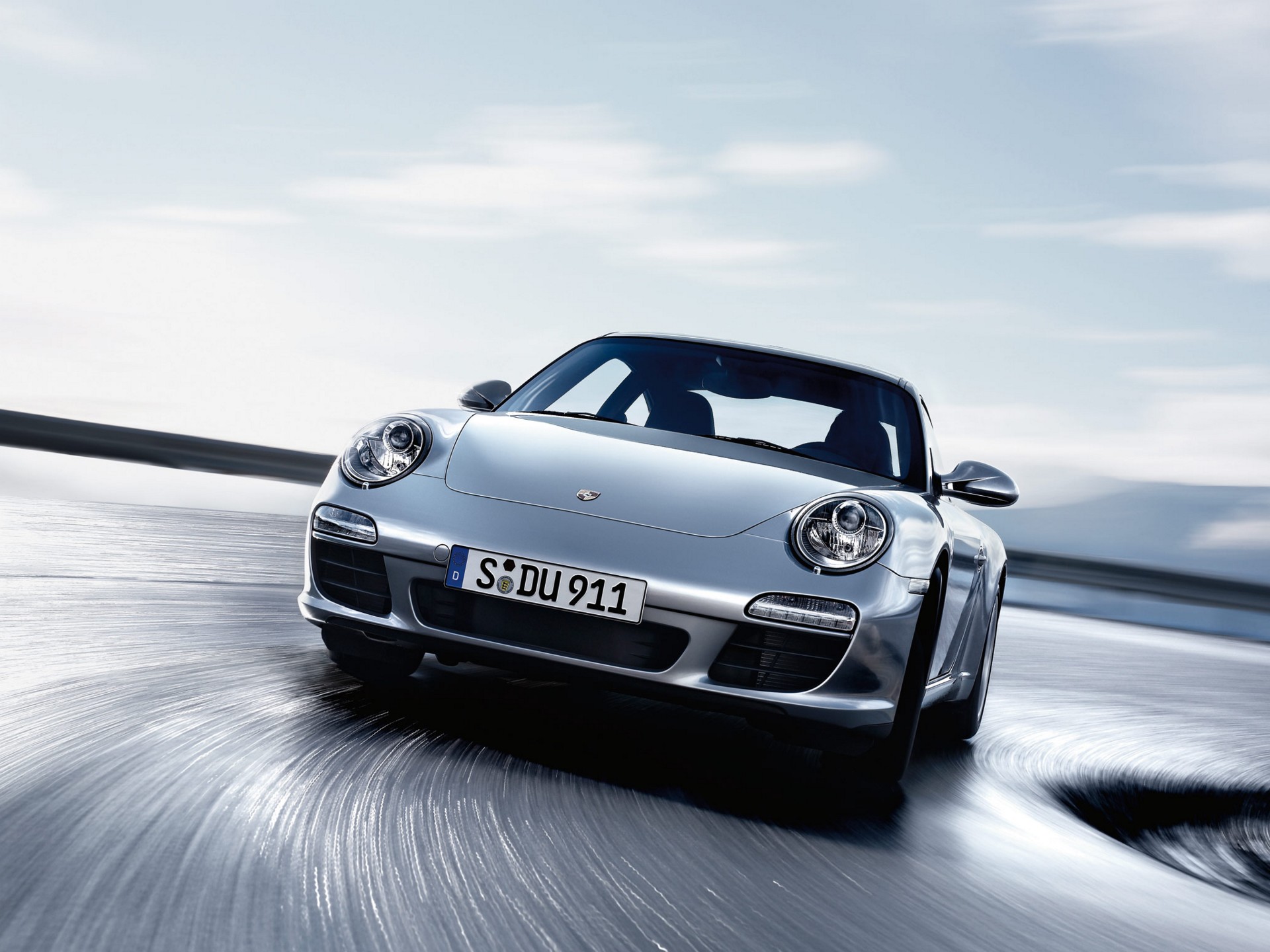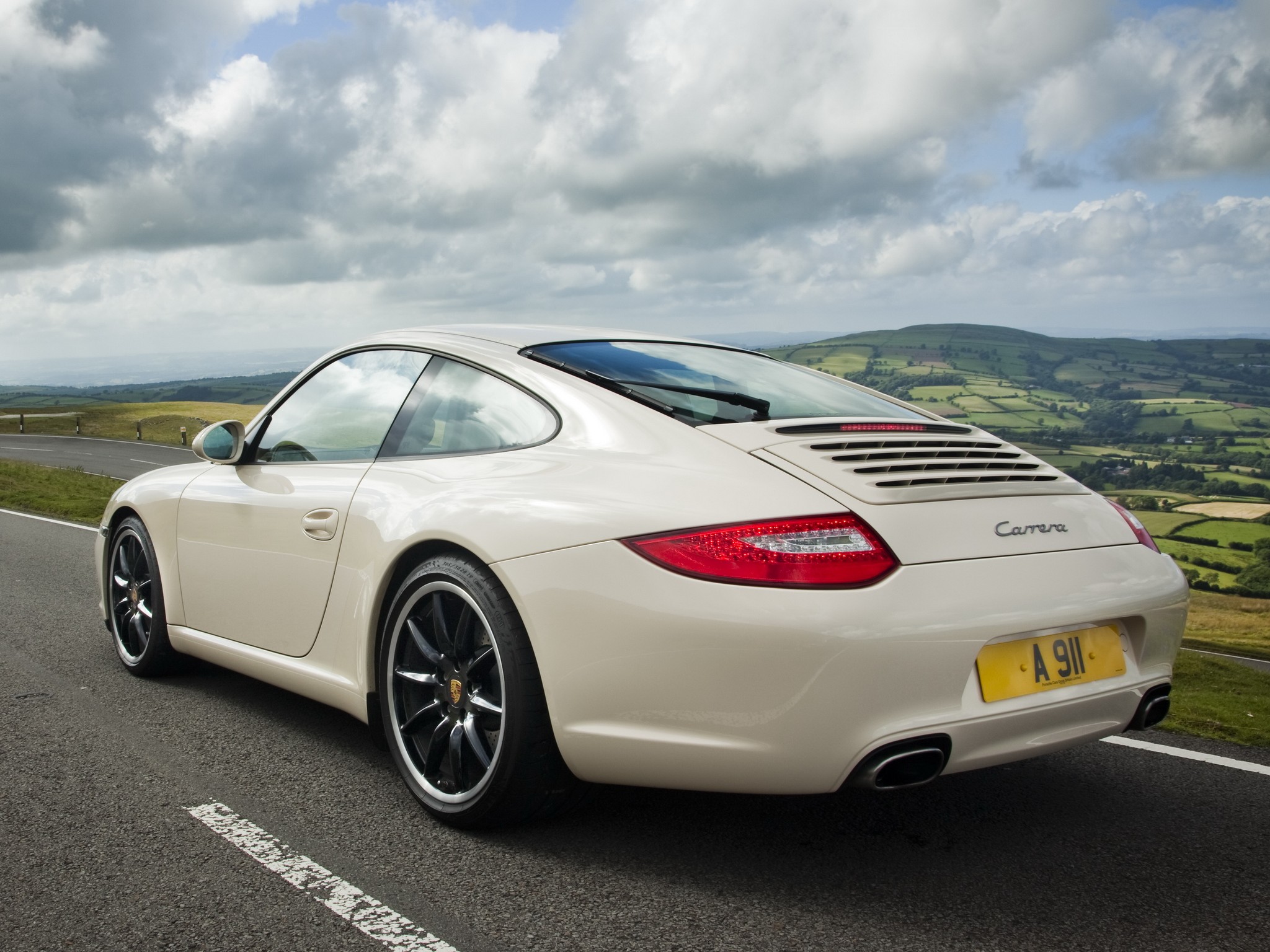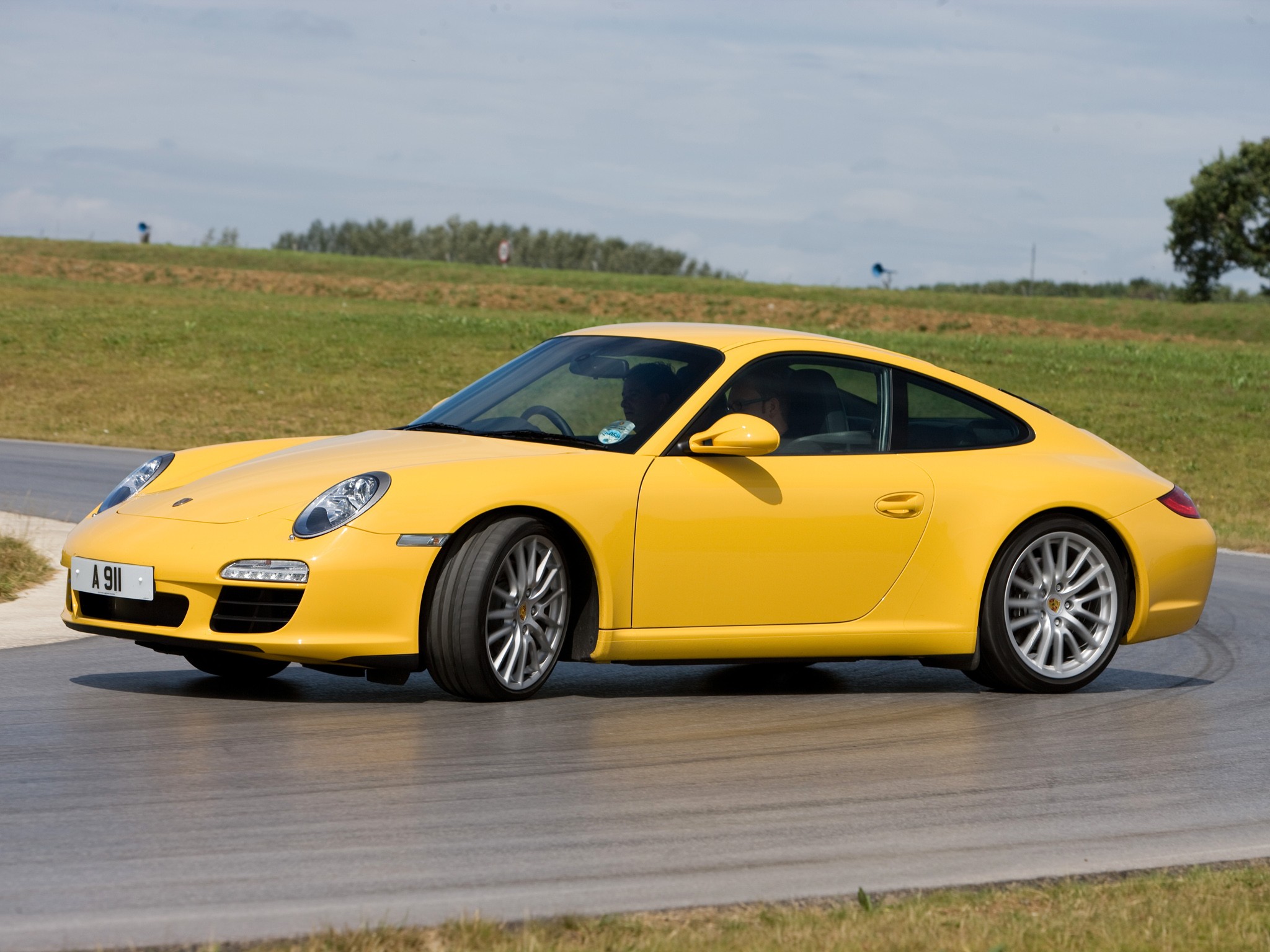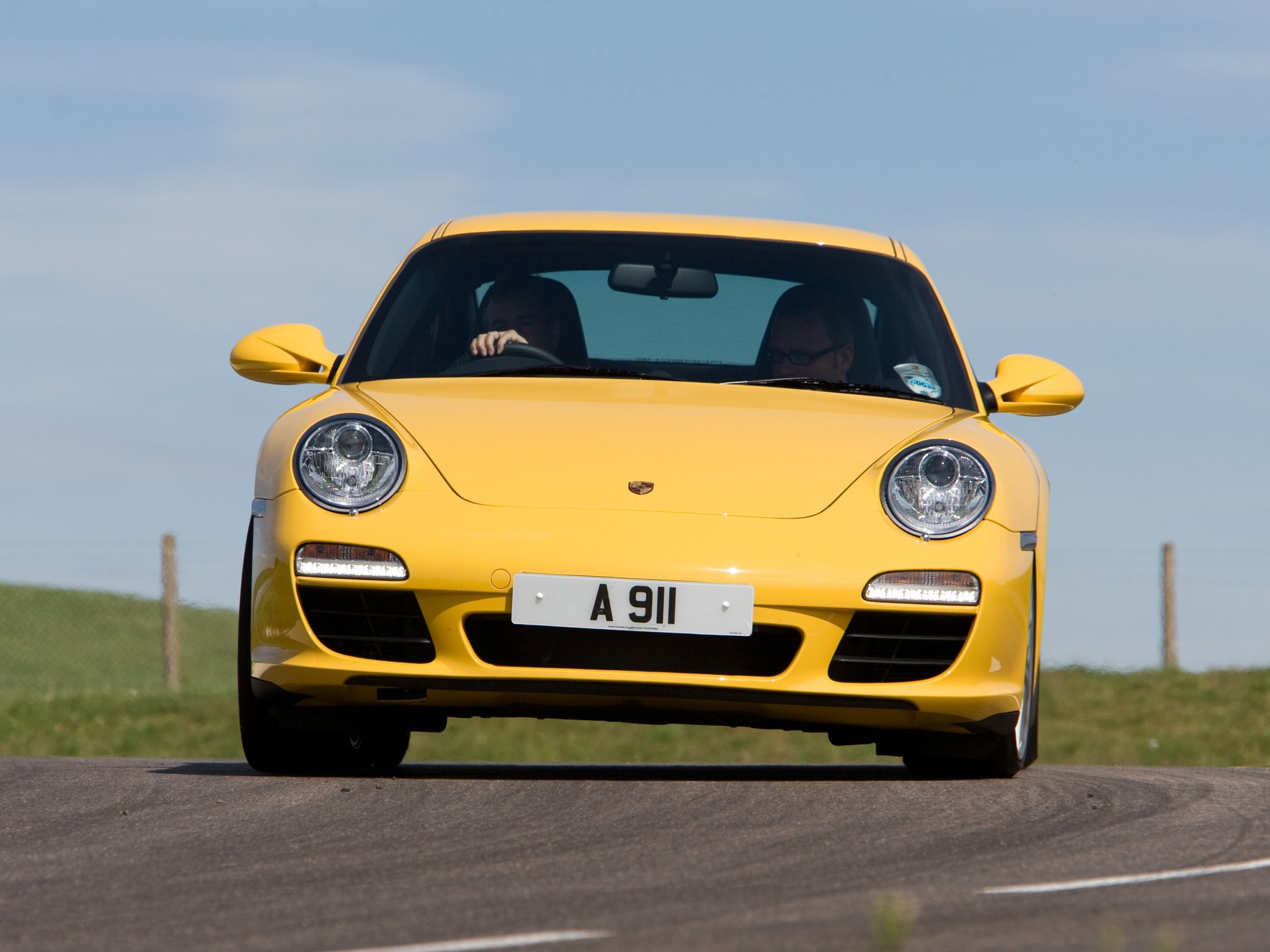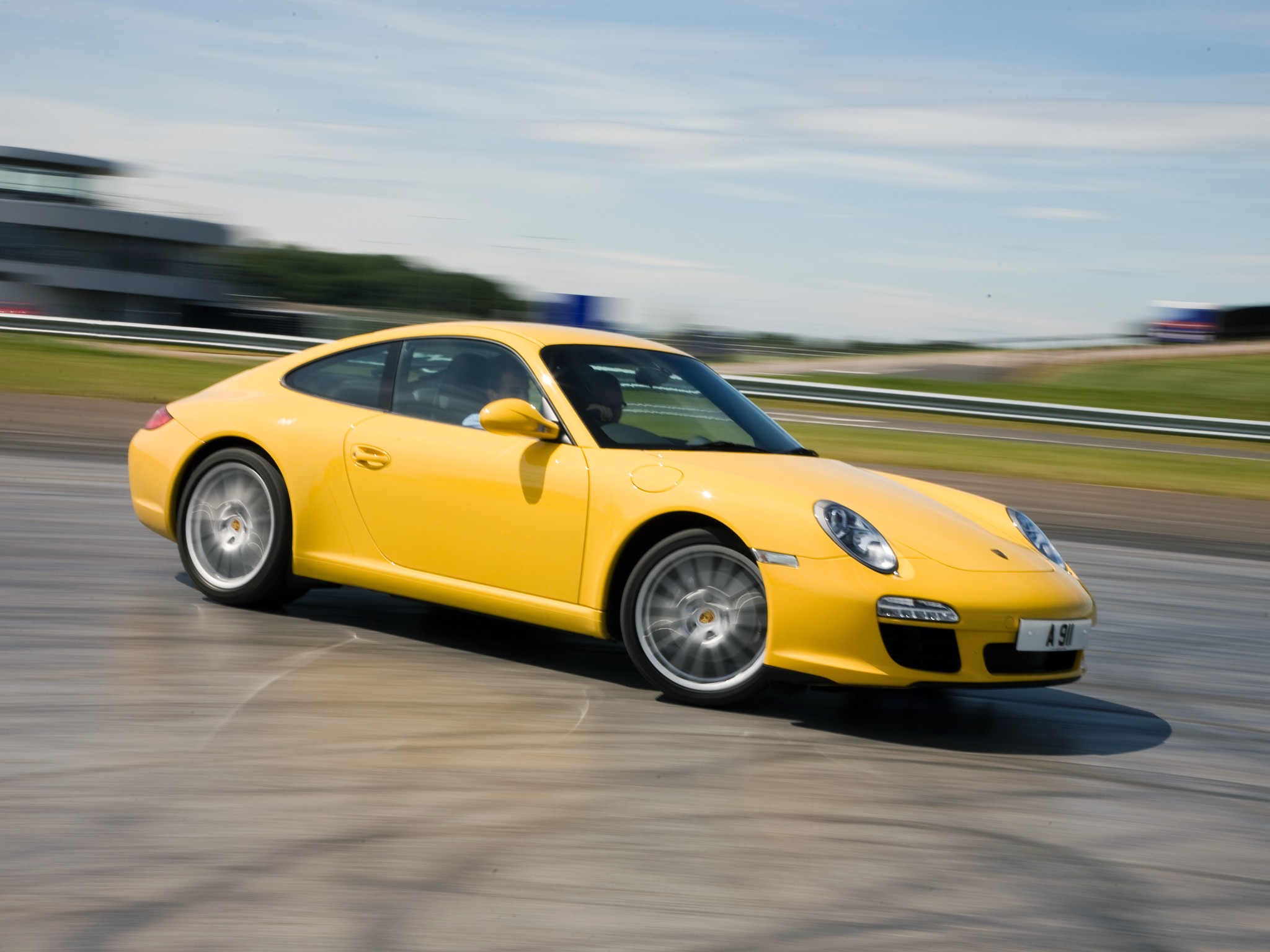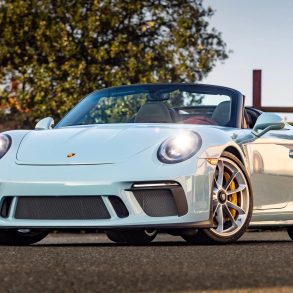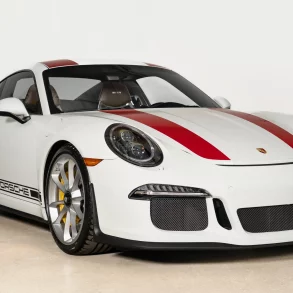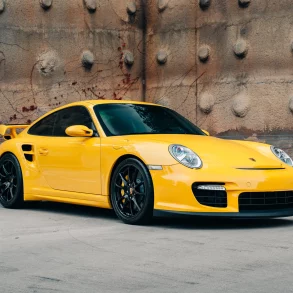(2009 – 2012) Porsche 911 Carrera (997.2) – Ultimate Guide
For the 2009 model year, the full 997 911 model range got a mid-cycle update. These cars became known at the 997.2 generation cars and it represented an important upgrade for the whole range. Porsche had to improve its engines to make them cleaner and to meet the new pollution laws in Europe.
On the outside, this was a mild tweak more than anything else. The front end looks slightly more Boxster-like, with a new front bumper, where larger air-intakes were sculptured. The headlights were fitted with LED daytime running lights and an option for bi-xenon lamps was added to the list. A new set of 18” light-alloy wheels was fitted as standard for the Carrera. The rear lights have a slightly more complex shape than before and are fully LED, including the turn signals.
Mirrors are bigger to comply with upcoming European regulations. The standard Carrera gets larger disc brakes, which share the 13-inch diameter of the Carrera S, but are thinner. Basically the only visible differentiator between the two versions are the tail pipes. The Carrera has two large exhaust pipes; the more powerful 997.2 Carrera S gets four smaller, circular tips.
Inside the car, on the center console, Porsche installed a new infotainment unit that featured a 6.5” touch-screen display. The latest Porsche Communication Management system, PCM 3.0 includes a new touchscreen feature, is standard on all 997.2 911s. Along with this upgraded system, options such as a hard disk drive navigation system, XM radio with XM NavTraffic capability, Bluetooth connectivity, iPOD port, USB port, and aux jack will be available. It is a major upgrade. In response to customer complaints about the cluttered center console, Porsche has now grouped the buttons in a line without spaces in between. It may look like fewer buttons, but there aren’t. For seats, there were more options than on the non-facelifted version. Besides the standard, manually adjustable, seats, there was an option for 12-way adjustable seats, adaptive sport seats, and new for the 2008 model were the sport-bucket seats. The instrument cluster featured five dials with a black background.
The 3.6-liter engine was enhanced to become more fuel-efficient and offer better performance. Direct-injection technology, along with new air filters, a more free-flowing exhaust system, and reduced engine friction, have made both the 3.6-liter and the 3.8-liter horizontally opposed sixes more efficient and more powerful. The Carrera gets 345 hp, up from 325; the Carrera S is rated at 385, 30 more than before. The rev limiter now responsibly cuts into the fun at 7500 rpm, up from 7300. The oil system is upgraded for track use. The braking system was enhanced with the introduction of the 318 mm (12.52”) front disc brakes and 299 mm (11.78”) in the rear.
The 997.2s are fitted with a 6-speed manual as standard. 2009 also sees the introduction of Porsche-Doppelkupplung (PDK), Porsche’s double-clutch gearbox. The seven speed gearbox combines the driving comfort of an automatic transmission with the gearshift capacity of a sequential gearbox used in race cars. Since Porsche’s double-clutch also boasts an automatic gearshift function, it replaces the former Porsche Tiptronic S automatic transmission on both the Carrera and Carrera S. PDK improves acceleration while reducing fuel consumption over the previous generation of Tiptronic S equipped 911s through optimized and adaptive gearshifts. Developed for Group C racing over 25 years ago, the PDK system features two parallel clutches to eliminate any interruption in power delivery and eliminates even the slightest break between gears.
The 911 has not become lighter, but it did not put on a lot of weight either. The base Carrera gains roughly 50 pounds, from 3100 to 3150 pounds, convincingly explained to us as being the result of wider wheels and tires, larger brakes, and standard bi-xenon lights with a washer system and fluid. The chassis remains largely unchanged, with slightly modified springs and dampers. The previous model’s optional sports suspension—only available with the manual transmission—is replaced with a variable, electronically controlled sports suspension based on the active PASM suspension. There is also the option to combine PDK with that Porsche’s optional Sport Chrono Plus including Launch Control. The result is high-speed acceleration free of wheel spin from a standstill and a racing shift pattern to further boost performance.
The Carrera equipped with PDK covers 0-60 mph in 4.5 seconds, and if you add Sport Chrono Plus, it accelerates from 0 to 60 mph in 4.3 seconds. Top speed is 177 mph.
Pictures
Press Release
2008 Porsche 911 Carrera Press Release
The essential model from Germany’s proud, independent sports-car maker is the Porsche 911 Carrera. This Coupe traces its lineage directly to the original Porsche 911, shown to the world initially at the Frankfurt auto show in 1963.
The 911 itself was the direct successor to Porsche’s first sports car, the ground-breaking and now highly coveted Porsche 356. When the 911 went into production as a 1964 model, it launched the horizontally opposed six-cylinder engine configuration that is still found in every Porsche 911 model more than four decades later.
The current Porsche 911 Carrera and its higher-performance variant, the 911 Carrera S, represent the sixth generation of the model range. Designated internally as 997, the current Coupe went on sale in 2005.
Looks that count
The familiar shapes of six generations of Porsche 911 Carrera have defined the face of the sports-car manufacturer for generations of admirers. The most recent iteration, known internally as 997, has an evolutionary design that’s both instantly recognizable as a Porsche 911 and still unique.
The all-steel bodies of the Porsche 911 Carrera and Carrera S Coupes were designed for enhanced aerodynamics, reduced drag and lift and increased powertrain and brake cooling. To those ends, the Porsche 911 Carrera with manual gearbox has a drag coefficient of only 0.28. When equipped with Tipronic S automatic transmission, the Cd is 0.29. The Carrera S, with its wider wheels and tires, has a coefficient of drag of 0.29 in manual form, 0.30 with Tiptronic S.
Porsche’s aerodynamicists worked with both body designers and suspension engineers, leaving no stone unturned in the quest for efficient airflow. To ensure low resistance and maximum stability, airflow over the body is carefully directed. Such details as the optimal rear windshield wiper mounted directly to the window glass rather than to the bodywork, and the double-arm mounting of the outside rearview mirrors are based in good aerodynamics.
This mirror design keeps the side windows clean and reduces turbulence. The mirrors even help guide moving air around the car toward the rear spoiler. The spoiler itself automatically deploys at 75 mph (120 kph) to enhance stability at higher speeds. As vehicle speed drops below 37 mph (60 kph), the spoiler is not needed and so to reduce unwanted air resistance, it automatically retracts.
Less lift, better grip
Porsche’s aerodynamic engineers understand that airflow beneath the car is as critical as the air moving over it. Therefore they imbued the Porsche 911 Carrera and Carrera S with the high-speed stability that affords the driver confidence by carefully managing the underbody air movement. Thanks to the body’s aerodynamic details, the Coupe has a miniscule rear coefficient of lift of 0.02 and a front Cl of 0.05.
The Coupe’s underbody is practically entirely encased. When equipped with a manual gearbox, the underbody carries six polypropylene sheets covering almost twice as much surface area as on the predecessor model.
The flow of engine-cooling air is directed out of the radiator and into the wheel arches rather than under the front tires. This helps with brake cooling and reduces lift. Stability is further enhanced by transitional zones beneath the front of the car that create a low-pressure area near the front axle.
Cooling air
Special ram-air flaps around the engine fan boost cooling airflow at high speeds. At low speeds, the flaps remain closed and air is drawn only through the radiator, at around 45 mph (70 kph), the flaps open under ram pressure. Special air ducts on the underbody direct cooling airflow to the brake discs, transmission and differential.
Wheel well spoilers reduce drag by guiding air around the wheels. Optimized brake air spoilers and pivot bearings ensure effective air around the discs, reducing disc temperatures.
New color choices
As popular tastes continue to change, Porsche’s designers continue to evolve the choices of exterior colors. For 2008, the Porsche 911 Carrera and Carrera S can be ordered in Macadamia Metallic. Other ’08 exterior paint refinements have Atlas Grey Metallic now a special color, replacing Lapis Blue Metallic, Malachite Green Metallic replaces Lagoon Green Metallic, and Carmona Red Metallic is replaced by Ruby Red Metallic.
Sumptuous purposeful interior
The Porsche 911 Carrera and 911 Carrera S Coupes offer their occupants a luxurious interior designed for both comfort and enthusiastic driving. The cabin of the 997 version of the Carrera and Carrera S is larger than the predecessor 996 model. The added space allowed the engineers to place the pedals closer to the firewall which further increases legroom for taller drivers. The seats are mounted closer to the floor than before which keeps the center of gravity as low as possible while creating more headroom.
Automatic climate controls with air and pollen filtration are standard equipment. The controls for the heat, air conditioning and ventilation (HVAC) systems are integrated into the center console near the switches for seat. Airflow through the HVAC system is optimized by large ducts and side vents.
Ample storage space
The cabins in the Porsche 911 Carrera and Carrera S offer the convenience of several storage locations. In fact, the larger interior of the cars now has a load volume of 7.24 cu.-ft. (205 liters).
A large locking glove box provides nearly 400 cubic inches (6.5 liters) of room and has an integrated CD storage rack and a penholder. The center console includes more than 90 cubic inches (1.5 liters) of storage capacity as well as a 12-volt outlet and a coin holder.
Additional storage pockets are located in the interior door panels with covers that also serve as armrests. Another large storage area is located behind the rear seats. Tipping the seatbacks forward expands this area.
Cupholders are located just above the glove box and are hidden behind a folding cover. When released, the left cupholder emerges in front of the central air vent in the instrument panel while the right cupholder rests in front of the front passenger vent.
A plethora of seating options
Driver and passenger seats in the Porsche 911 Carrera and 911 Carrera S Coupes feature a Porschepatented system engineered to better absorb vibration on long trips. The standard seats also provide outstanding lateral support to keep the occupants in place when experiencing high lateral acceleration through curves.
Compared to the seats used in the previous generation, the current Porsche 911 Carrera and 911 Carrera S Coupe seats are more than 6 pounds (3 kg) lighter and simultaneously more stable. The standard front seats offer manual fore/aft and height adjustment. Backrest angle is electrically controlled for finer adjustment.
All-electric seats are available and adjustable in 12 directions, including the angle of the seat cushion and through lumbar support, via four inflatable air chambers. These seats also have a memory feature.
There is also a choice of sport seats with even greater lateral support, both in the seat cushion and shoulder area, are optional. These seats also have firmer padding.
Adaptive sport seats combine the sport seats design with electrical controls. These seats have four-dimensional adjustment, including width.
New for this year are optional sports bucket seats. Essentially race seats with folding backrests, these seats boast carbon fiber-reinforced construction for a weight savings of 15 to 20 pounds (7 to 9 kg) over standard seats, depending on model.
All Porsche front seats, including the new sports bucket seats, have integrated thorax airbags and are compliant with all U.S. safety standards. And they all have folding backrests to allow access to the Coupe’s rear seats.
Choice of steering wheels
Porsche engineers believe that drivers should have a choice of steering wheels, given that item’s critical importance. The standard steering wheel in the Porsche 911 Carrera and 911 Carrera S is a dynamic three-spoke design that is adjustable both in height and reach. The wheel is built on a composite magnesium structure that reduces the weight of the steering wheel assembly over the previous aluminum wheel.
A multifunction steering wheel is available as an option. This wheel offers redundant controls for the Porsche Communication Management (PCM) system. Without taking his hand from the wheel, the driver can operate audio, navigation and telephone equipment. A rotary knob on the left-hand steering wheel spoke controls audio volume, which can be muted by pressing the knob. A knob on the right-hand spoke accesses menu points on the PCM system. Pressing the knob selects individual items. The two buttons on the lower steering wheel arm control the telephone.
In addition to the standard leather colors to match the rest of the interior, the multifunction steering wheel is available with wood grain, aluminum or carbon-fiber trim on its outer ring.
New interior colors
The leather upholstery and trim of the Porsche 911 Carrera and Carrera S can no longer be ordered in Palm Green as that color is gone from the palette. New for 2008 is the addition of Carrera Red as a new natural leather option.
Large instrument display The five dials that comprise the instrument panel are positioned to provide outstanding readability. The faces of the dials are black in the Porsche 911 Carrera and white in the 911 Carrera S.
Given the sporting soul of the Porsche 911 Carrera and Carrera S, the tachometer dominates the instrument cluster. The rev counter is the largest gauge and it is mounted in the center of the display. A digital speedometer within the tachometer’s face beneath the rev counter allows the driver to check speed and engine rpm in a single glance.
The separate analog speedometer includes overall and trip odometers and is located just to the left of the tachometer. The gauge to the right of the tachometer includes coolant temperature and fuel indicators, as well as the clock. The oil temperature gauge is at the far left of the cluster with the oil pressure gauge at the far right.
All the gauges have white light-emitting diodes that enhance illumination for night driving.
Standard communications
Both the Porsche 911 Carrera and Carrera S Coupes come standard with Porsche Communication Management (PCM). Part of PCM is the Sound Package Plus audio system with nine speakers and an external analog amplifier.
The system includes two 0.75-inch (19-mm) tweeters and one 2.5-inch (70-mm) midrange speaker in the instrument panel, two 4.0-inch (100-mm) mid-range speakers and two 8.0-inch (200-mm) woofers in the doors and two 4.0-inch (100-mm) wide-band speakers in the rear section of the passenger compartment. The external analog amplifier is located in the luggage compartment and supplies the woofers in the doors and the mid-range speakers in the instrument panel.
Safe by design
Due to the use of high- and ultra-high-strength steel as well as improvements in spot-welding and bonding, the Porsche 911 Carrera and 911 Carrera S Coupe bodies are extremely torsionally rigid and flex resistant while still being lightweight.
Particular attention was paid in designing and engineering the junction of the A-pillars and the roof frame, as well as the safety structure involved in head-on and offset collisions, including the transition between the door and B-pillars. Forces in a collision can be transferred through the door, around the passenger compartment to the rear of the car.
A bulkhead crossbar at the front of the car is made from high-strength boron steel and special assembly processes were developed to minimize intrusion in to the foot well in an offset collision.
Six airbags and POSIP
The Porsche 911 Carrera and 911 Carrera S Coupe are equipped with six airbags. There are two frontimpact airbags, two front-seat mounted thorax protecting side-impact airbags and the two curtainstyle door-mounted side-impact airbags that are part of the Porsche Side Impact Protection (POSIP) system.
The frontal airbags are full-size, two-stage front units featuring an organic-based propellant. This propellant reduces the stored airbags’ size and weight, and allows them to be recycled.
The front passenger seat features sensors that accommodate child safety seats. Should the sensors detect a child sitting in that seat, the airbag is defeated.
The POSIP boasts head airbags that deploy upward from their housings in the door windowsills. These airbags provide a flat cushion that inflates to nearly 500 cu.-in. (8 liters) and are designed to help protect the heads of the driver and front-seat passenger from broken glass and objects that might enter through the window in the event of an accident.
Crisp handling equals accident avoidance
Knowing full well that all vehicles are safest by avoiding an accident in the first place, Porsche engineers understand that their cars’ awesome dynamic abilities are as much a safety feature as a performance attribute.
Building upon a wide 58.5-inch (1486 mm) track in front and 60.4 inches (1534 mm) in the rear, the suspension engineers gave the Carrera and Carrera S a secure footprint. The engineers then specified a lightweight and technologically advanced suspension system and a low center of gravity for optimum agility and driver confidence assuring stability.
The Carrera and Carrera S boast Porsche’s proven front suspension. This consists of a Porsche-optimized McPherson strut configuration. The spring-strut axles use separately mounted longitudinal and track control arms to assure precise wheel guidance while controlling body roll.
In the rear, the Carrera and Carrera S Coupes have a five-arm, spring-strut suspension with longitudinal and track control arms.
By using hollow front axle pivot bearings with reinforced and larger diameter wheel mounts, the engineers reduced weight, improved strength and, as a bonus, improved cooling airflow to the front brakes.
In the rear, the axle has been widened by 1.34 inches (34 mm) and the multi-arm axle and its aluminum subframe are made of more rigid components than before. The subframe is approximately 2.2 pounds (1 kg) lighter than in the predecessor model. Porsche engineers raised the upper track control arm pivot points by 0.39 inches (10 mm) and lowered the pivot points of the bottom arms by 0.20 inches (5 mm). This modification increased the suspension’s antisquat effect by 25 percent while providing better support of lateral forces and ensuring directional precision in turns.
Even better ride and handling with PASM
For enhanced ride and agility, the Carrera S Coupe comes standard with the most recent version of Porsche Active Suspension Management (PASM). This feature is available as an option on the Carrera.
This electronically controlled suspension allows the driver to select either a Normal or Sport setting depending on the driving situation and conditions. Besides allowing the choice setups, PASM also lowers the car’s ride height by about 0.4 inch (10 mm).
At the core of PASM are continuously adjustable shocks, a front and rear accelerometer and a dedicated electronic control unit. The PASM controller receives data about the vertical movements of the car’s body as well as steering angle, vehicle speed, brake pressure and engine torque.
The control unit then alters oil flow within the shocks to constantly provide the optimum firmness for the conditions and driver’s desire. The system’s active shocks have a similar structure as standard shock absorbers but incorporate an electronically controlled internal bypass valve that increases or reduces oil flow as needed.
Intelligent damping control
More than merely a two-setting suspension, PASM automatically adjusts to the driver’s style. If left in Normal mode, the PASM will gradually increase the suspension’s firmness if the car is driven with greater enthusiasm, generating higher dynamic forces.
Rapid and sudden steering movements indicate to the control unit an immediate need to increase shock forces on both axles, to reduce swaying or rocking.
By monitoring vertical motions of the body, the system can firm the shocks in Normal mode as reaction to a rough road, minimizing rocking. However, in Sport mode the same motions alert the controller to reduce the shock absorbing forces to help ensure that the wheels remain in contact with the road and increase ride comfort.
When the driver steps on the brakes, PASM firms the shocks to reduce body dive and, as the braking sequence continues, adjusts to softer shock absorbing, with different forces front and rear, to help ensure solid tire-to-surface contact, even on broken pavement or rough roads, to minimize stopping distance.
PASM also controls body squat during full-throttle acceleration. As the driver may briefly lift off from the throttle during gear shifts, PASM instantly adjusts firmness at front and rear axles to compensate for the brief change in loads. In Normal mode, PASM increases shock absorbing to prevent excess squat. In Sport mode, the shock absorbing is softened to improve traction.
In testing at Germany’s famous Nürburgring racing circuit, the PASM Sport setting produced lap times an average of five seconds faster than with the standard Porsche 911 Carrera Coupe suspension setup.
Stability is standard
Both the 2008 Carrera and Carrera S are equipped with enhanced Porsche Stability Management (PSM) as standard equipment. PSM is a computerized system that relies on data from an assortment of sensors to help maintain the car’s intended path should the car be pushed to the edges of its dynamic limits. By comparing speed of the individual wheels, vehicle speed and engine speed, PSM can determine that the car may be beginning to slip sideways or that a tire is losing traction and beginning to spin.
To rein the car back under the driver’s control, PSM applies individual brake force to a slipping wheel. If more drastic measures are required, PSM works with the engine control module to reduce engine power briefly. PSM is programmed to intervene less quickly when the car is moving below 45 mph (70 kmph) to allow the driver more latitude.
The latest iteration of PSM benefits from advanced antilock brake sensors that take their readings from multiple seats fitted directly on the wheel bearings. These improved signals allow more precise processing and control. Instead of conventional shaft valves, linear solenoid valves adjust brake pressure with nearly infinite precision. To provide pressure more quickly, an advanced hydraulic pump is used, thus eliminating the need for a pre-charging pump and its connections. This reduces system weight by 6.6 pounds (3 kg) or some 25 percent.
Besides helping ensure stability, PSM boasts new functions. Critical among them is pre-loading the brakes to help shorten stopping distances in an emergency. Whenever the driver lifts off the gas pedal abruptly the system instantly pumps brake fluid from the hydraulic PSM control unit to the brake calipers. This has the pads already touching the rotors by the time the driver’s foot hits the brake pedal. The result is less reaction time for quicker stops.
The refined PSM also helps drivers apply full braking force when needed. If the driver hits the brake pedal hard, but not with full force, PSM instructs the hydraulic pump to apply the rest, right up to the ABS threshold.
Like all Porsche dynamic safety-enhancement systems, the enhanced PSM does not interfere with a skilled enthusiast’s pleasure. If the driver doesn’t increase his pressure on the brake pedal past a certain point, the additional pressure built up by the system is reduced. Critically, the pressure booster does not always cut in.
And true to Porsche’s philosophy that the driver should always be in command of the vehicle, PSM can be switched off by the driver, unlike some other systems. When deactivated, the enhanced PSM remains off until the driver firmly hits the brake pedal, reaching the ABS threshold on at least one front wheel. This allows the skilled enthusiast driver more dynamic freedom. As with other Porsche performance-enhancing technologies, PSM is non-intrusive, never abruptly wrestling control of the car from the driver.
Variable-ratio steering
The Carrera and Carrera S come with standard variable-ratio rack-and-pinion steering. This both increases agility and stability in higher speed maneuvers and reduces steering effort at slow speeds.
When the steering wheel is turned within 30 degrees of center, the ratio is similar to that on the previous generation 911. This helps provide a smooth and calm driving experience, even on rough surfaces.
However, when the steering wheel angle exceeds 30 degrees, the ratio become more direct, reducing lock-to-lock from 2.98 to 2.62 turns. This gives the driver better control both on winding roads and in slow-speed parking maneuvers.
In addition to the variable ratio technology, the Porsche 911 Carrera Coupe has steering columns that tilt and telescope. The wheel can be adjusted by 1.57 inches (40 mm) in height and reach.
Incorporated in the steering system is an electric steering wheel lock as part of the car’s antitheft immobilizer.
Beyond ample braking power
Like all Porsche vehicles, the Carrera and Carrera S boast four-wheel disc, antilock brakes. All four discs on both cars are cross-drilled and vented internally for optimum performance even under long periods of hard use.
The front rotors on the Carrera are 12.52 inches (318 mm) in diameter and 1.10 inches (28 mm) thick while the rear brakes are 11.78 inches (299 mm) across and 0.95 inches (24 mm) thick.
The Carrera S is equipped with larger brakes commensurate with its higher performance potential. The front rotors have a 13.0-inch (330-mm) diameter and are 1.34 inches (34-mm) thick. The rear rotors are the same diameter as the fronts, though thinner: 1.10-inch (28-mm) thick.
All four discs on both models are clamped by four-piston, monobloc aluminum calipers. The Carrera’s calipers are painted black and the Carrera S has red calipers.
To ensure proper brake-pedal feel and ease of braking despite its added power, the Carrera S Coupe has a larger brake-master cylinder than the standard Carrera. The piston in the master cylinder has a stout 1.0 inch (25.4 mm) diameter.
Reliable vacuum assist
As with the brake systems on many cars, the Carrera and Carrera S have vacuum-assisted braking. However, unlike most, the Porsche automobiles do not rely on intake-manifold vacuum for that assist. Carrera and Carrera S have a mechanical vacuum pump driven by the right-hand cylinder bank’s exhaust camshaft. The vacuum pump ensures a constant and reliable source of braking assist, regardless of ambient air pressure or steady open-throttle driving.
Greater stopping power available
Drivers desiring even greater stopping performance than Porsche automobiles already wellrenowned braking can specify Porsche Ceramic Composite Brakes (PCCB). These race-bred brakes are available as an option on both Porsche 911 Carrera and 911 Carrera S Coupes.
Developed for the extreme use of motorsports, PCCB replaces the standard metal brake rotors with 13.78-inch (350-mm) ceramic discs. Besides delivering otherwise unobtainable levels of consistently superb braking performance under repeated heavy use, the ceramic rotors weigh approximately 50 percent less than the iron ones. PCCB reduces the car’s unsprung mass by 34.4 pounds (15.6 kg).
In their latest iteration, Porsche Ceramic Composite Brakes are more rigid than previously while providing more interior cooling ducts. The newest brakes have increased fiber reinforcement of the friction surface, significantly enhancing resistance to abrasion under high loads.
Choice of tires and wheels – but no heavy spare
The Porsche 911 Carrera rides on standard 18-inch light-alloy wheels of a five-spoke design. The front wheels are 8-inches wide, the rears 11-inches wide. Tires are Z-rated radials, 235/40-aspect in front and 265/40 in the rear.
The Carrera S boasts 19-inch diameter light-alloy wheels. While the front wheels are 8-inches wide like the Carrera, the rear wheels are 11 inches in width. Again, tires are Z-rated radials, 235/35 in front and a monstrous 295/30 in the rear. The larger 19-inch wheels and tires of the Carrera S are optional on the Carrera. Also available as options are the new 19-inch Turbo wheels.
To help reduce vehicle weight by 22 pounds (10 kg) and save space, the Carrera and Carrera S Coupes carry no spare tire, jack or tire-changing tools. Instead the cars are equipped with a small electric air compressor and tire sealant allowing the emergency repair of a small puncture. This gives the driver the safe opportunity to drive at speeds up to 50 mph (80 kph) to have the tire properly repaired or replaced.
Powerful environmentally friendly drivetrain
Porsche’s familiar 3.6-liter, horizontally opposed six-cylinder “boxer” engine provides the Porsche 911 Carrera Coupe with 325 horsepower at 6800 rpm and 273 lb.-ft. of torque at 4250 rpm.
This engine scoots the Carrera Coupe with a manual gearbox from a standing start to 60 mph (96 kph) in 4.8 seconds, to 99 mph (160 kph) in only 11.0 seconds. The car completes a standing kilometer sprint (0.62 miles) in 23.8 seconds and achieves a top speed of 177 mph (285 kph) on the test track.
When equipped with the driver-shiftable Tiptronic S automatic transmission, the Carrera’s acceleration is hindered only slightly. The zero to 60 mph (96 kph) run takes 5.2 seconds, to 99 mph (160 kph) is 12.0 seconds, and top speed is a track-proven 174 mph (280 kph).
Yet, despite its exhilarating performance, the Carrera is rated at 18 mpg in the city and 26 mpg on the highway when equipped with the standard six-speed manual gearbox. The optional Tiptronic S driver-shiftable automatic transmission is rated at 18 mpg in the city and 24 mpg on the highway. This means that despite its more than 300 horsepower, the Carrera is not subject to any gas guzzler penalty. In addition, the engine is so environmentally friendly that the car is certified as a Low Emissions Vehicle, category two (LEV-II).
S means more power and performance
The Porsche 911 Carrera S Coupe is powered by a larger, more potent version of the Porsche horizontally opposed six-cylinder. The car’s 3.8-liter engine cranks out 355 horsepower 6600 rpm and 295 lb.- ft. of torque at 4600 rpm.
The boost in power means the Carrera S Coupe with a manual gearbox runs to 60 mph (96 kph) in only 4.6 seconds, to 99 mph (160 kph) in 10.7 seconds and covers a standing kilometer in 23.4 seconds. Top speed at the test track for the Carrera S is 182 mph (293 kph).
When mated with the Tiptronic S driver-shiftable automatic transmission, acceleration is only slightly affected. The zero to 60 mph (96 kph) changes to 5.0 seconds and the run to 99 mph (160 kph) takes 11.6 seconds. Track-proven top speed for the Carrera S Coupe with Tiptronic S is 177 mph (285 kph).
Astoundingly, despite the Carrera S Coupe’s increased performance over the Carrera, its EPA fuel economy ratings are 17 mpg in the city and 25 mpg on the highway with the manual gearbox and 17 mpg/24 mpg with Tiptronic S. And the added power and torque do nothing to diminish the engine’s clean exhaust. Like the Carrera, the Porsche 911 Carrera S is certified as LEV-II.
More than more bore
To gain the additional output for Porsche 911 Carrera S, engineers did more than simply increase the six-cylinder engine’s bore diameter by 0.12 inches (3 mm).
They changed the intake manifold and modified the intake camshaft lift pattern. Fuel injector angles were changed to enhance fuel flow to the center of the combustion chamber. This enhanced fuel/air mixture also reduces exhaust emissions, even after a cold start, and increases torque throughout the power curve.
The intake system was modified to increase flow. A Helmholtz resonator is used to enhance acoustics. This provides more than 18 cubic inches (0.3 liters) of additional resonance volume between the hot-film air-mass meter and the throttle butterfly. The resonator works between 5000 and 6000 rpm to reduce oscillations in intake sounds. Porsche has applied for a patent for this technology that provides a deep, throaty sound without aggressive peaks.
Critically, the engineers also modified the combustion chamber of the larger engine, increasing compression ratio to 11.8:1 vs. the Carrera at 11.3:1. The resulting higher combustion forces produce more torsional crankshaft vibration, so Porsche engineers integrated a unique vibration damper in the pulley at the end of the crankshaft.
While conventional vibration dampers are made of cast iron, the 3.8-liter engine in the 911 Carrera S has an aluminum damper that weighs 3.3 pounds (1.5 kg) less than the one on the 3.6-liter engine.
While the 3.8-liter engine uses twin radiators like the 3.6-liter powerplant, it has a higher performance cooling pump and an oil/water heat exchanger with two additional cooling layers.
Despite the modifications needed to it, the stronger 3.8-liter engine weighs no more than the 3.6- liter version and has a higher output per liter than the smaller, 92.9 hp/liter vs. 90.4 hp/liter.
Distinctive exhaust pipes for each model
Both Carrera and Carrera S use a two-stage “cascade” style catalytic converter designed to reach operating temperature quickly, reducing exhaust emissions. Advanced thin-wall construction also makes this exhaust system lightweight. A short-pipe exhaust manifold for the Porsche 911 Carrera S engine further reduces emissions.
To differentiate the Porsche 911 Carrera from the 911 Carrera S when seen from the rear, the shape of the tailpipes has been made distinctive. The 911 Carrera has a pair of oval-shaped pipes while the Porsche 911 Carrera S has twin round tailpipes on each side.
Similar configuration
The rear-mounted engines in both the Porsche 911 Carrera and Carrera S Coupes share the essential construction and design that’s long identified Porsche engines.
There are six individual ignition coils and sequential fuel injection all under the purview of Motronic engine controls. The crankcase and cylinder heads are aluminum. The cylinders are Nikasil coated for improved wear and low friction. Both engines share a 3.26-inch (82.8-mm) stroke. There are four valves per cylinder, operated by dual overhead camshafts, with variable intake valve timing and lift.
Two different camshaft profiles
The engine control module controls valve action via Porsche VarioCam Plus. This valve management system adjusts intake valve lift and timing based on engine speed and load. Though the VarioCam Plus operates far too quickly for the driver to be aware of it, the results are obvious. The effect is that of an engine with two different intake camshaft profiles, one set up for smooth and efficient around-town driving, the other a high-performance camshaft designed for higher speed. These two designs usually each preclude the other and most cars have a compromise of the two. Porsche VarioCam Plus removes the compromise and the driver benefits from the best of both driving worlds.
Valve timing is controlled via a vane cell adjuster which continuously varies the two intake camshafts positions relative to crankshaft. The adjustment range covers a 40-degree range of crankshaft angle. Valve lift is varied by a system utilizing two cup tappets, one resting in the other. These tappets are actuated by separate cam lobes of differing size. The engine control module directs oil pressure to the appropriate tappet based on engine speed and load parameters. When non-pressurized, the tappet moves under the camshaft lobe, but exerts no pressure on the valve, in effect free wheeling.
Integrated dry sump lubrication
Given that the Porsche 911 Carrera and Carrera S are designed to be driven quickly and enthusiastically, every element of the cars must withstand extended periods of high levels of lateral acceleration. Drawing from decades of racing success, Porsche engineers have ensured that the cars’ engines will always be adequately lubricated, even under the most extreme driving conditions.
This is guaranteed by integrated dry sump lubrication incorporating two re-delivery pumps extracting oil from the cylinder heads and pumping it into the oil sump. From here, a pressure pump delivers oil to the lubricating points within the engine, with the lubricant cooled by a compact oil/water heat exchanger.
The integrated dry-sump system is so precise at monitoring oil levels that the engines have no engine oil dipstick. Instead, an electronic monitor measures the oil level and displays the result on the instrument cluster.
Six-speed manual transmission
Both the Porsche 911 Carrera and Carrera S Coupes come equipped with a six-speed manual gearbox as standard. Given the potency of the engine in the Carrera S, the gearbox has been upgraded over the predecessor model.
Steel rather than brass synchronizing rings as well as thick shafts and wide gears provide strength, yet the transmission’s weight is kept down by using extra-thin aluminum in the oil chamber walls. The transmission’s internal architecture minimizes splash effect and flow losses, increasing the efficiency.
The gearbox uses wear-resistant carbon-coated synchromesh rings on First, Second and Third gears. In addition, First and Second gear boast triple synchronizers. Third gear has double synchronizer rings and Fourth through Sixth gears use a single ring.
These internal details mean the driver can shift more quickly and smoothly, since less force is needed and the linkage has shorter travel during gear changes.
Self-shifting or not
Porsche’s ground-breaking five-speed Tiptronic S driver-shiftable automatic transmission is optional on both the Porsche 911 Carrera and Carrera S Coupes. By either tipping the console-mounted gear selector or by depressing steering-wheel mounted switches, the driver can up- and down-shift without the need of a clutch. Or the driver can simply let the Tiptronic S operate as a fully automatic transmission.
To match the power of the 3.6- and 3.8-liter engines, the Tiptronic S recently was enhanced in several ways. Stall speed was increased so the converter lock-up clutch is closed and power flows more smoothly. Instead of making the full-power First to Second shift at 6900 rpm as in earlier iterations, Tiptronic S now upshifts at 7200 rpm.
Oil pressure build-up and clutch plates have been revised for smoother shifts. To keep the enhanced Tiptronic S operating at proper temperatures, the gearbox is equipped with an additional oil/water heat exchanger with two additional cooling layers and with a more powerful coolant pump.
Emulating the skilled enthusiast driver, the engine control module briefly increases engine speed for smooth, aggressive downshifts. This not only adds to the sporting soul of the driving experience, it also shortens downshift time and enhances gear mesh.
And since Porsche’s philosophy is firmly rooted in the driver always being in command, the Tiptronic S can be set to not upshift when the engine bumps up against the rev limiter. By placing the Tiptronic S selector lever in its manual mode and deactivating the PSM, the enthusiast driver can keep the engine near its rev limit while maintaining the selected gear.
Sport Chrono Package Plus
For those drivers who want an even more-aggressive Tiptronic S transmission, both the Porsche 911 Carrera and Carrera S Coupes are available with the optional Sport Chrono Package Plus feature. Sport Chrono Package Plus is also offered on models with the standard-equipment manual gearbox.
This enhancement package brings specific control maps to the Motronic engine management system and Porsche Stability Management (PSM), as well as to Porsche Active Suspension Management (PASM) and Tiptronic S transmission on vehicles equipped with these technologies.
The revised Motronic maps strongly favor performance over comfort and provide even quicker engine response, not only on deployment but also on release of the throttle. This helps the Tiptronic S transmission makes its shifts more aggressively.
Stability thresholds allow more lateral slip before the ABS and PSM intervene. On those cars with PASM, that system switches to its firmer setting to provide more agility in cornering. However, in some instances, such as on wet pavement, a softer suspension setting can be advantageous so the driver using Porsche Sport Chrono Plus can easily press the PASM button to return to the normal damper settings.
The Porsche Sport Chrono Plus package includes a digital/analog stopwatch and lap-counting function.
X51 power booster for the Carrera S
Another performance increasing option is the X51 Power Kit, available for the Porsche 911 Carrera S. Featuring revised cylinder heads, carbon-fiber air cleaner housing, an aluminum air intake system, a reprogrammed engine control unit, and revised exhaust manifolds with sport exhaust and specially tuned tailpipes, the kit increases power, cuts acceleration times and increases the trackproven top speed.
With the kit, the horsepower rating of the Carrera S’s 3.8-liter flat six-cylinder engine increases from 355 to 381. Acceleration from a standing start to 60 miles per hour (96 kph) drops by twotenths of a second to just 4.5 seconds with a manual transmission and to 4.9 seconds with Tiptronic S. With the manual gearbox, the Carrera S Cabriolet’s top track speed climbs to 186 mph (298 kph).
An impressive standard-equipment list
Among the sophisticated and appreciated standard features on both the Porsche 911 Carrera and Carrera S Coupe is an exterior lighting system with a guide-me-home feature. By selecting the appropriate setting on the light switch, this feature turns on the headlamps, foglamps, rear lights and license plate lights for 30 seconds after the occupants exit the car. This allows them to see obstacles outside the vehicle.
Both Coupes feature a standard antitheft warning system that uses radar to maintain surveillance of the vehicle interior. Unlike some systems, this sensor is not affected by reflections from bright interior leather surfaces.
A standard HomeLink controller is installed in both Carrera and Carrera S Coupes. This offers drivers an integrated remote control of garage or gate openers as well as residential lighting.
Comfort and convenience options
The PCM system of both the Porsche 911 Carrera and Carrera S Coupes can be improved with an optional DVD-based navigation system. The navigation DVD is located in the luggage compartment, allowing the slot in the system in the center console to be used for audio CDs.
The navigation module allows rapid availability of routes and map updating and 23 zoom stages to a resolution of some 55 yards (50 meters). For 2008, the navigation system has been enhanced and both New Zealand and Brazil have been added to the database.
Also optional are Porsche Park Assist which uses ultrasound to measure the distance between the car’s rear bumper and obstacles around the vehicle. The system warns the driver as the car approaches those obstacles.
Other available features include a PCM telephone module, wood grain, and aluminum or carbon interior trim.
Audio options
The standard CD/MP3 playing audio system can be upgraded with an optional six-disc CD changer.
Those drivers of the Porsche 911 Carrera and Carrera S wanting maximum audio performance can opt for a Bose Surround Sound System with 13 speakers and a seven-channel digital amplifier. The digital amplifier has a 5×25-watt output and additional support from integrated and external 100- watt switching terminals. Active electronic equalization adjusts the reproduction of sound to specific acoustic conditions for all the Coupe’s occupants.
The system includes Bose AudioPilot technology that automatically adjusts frequency levels to compensate for wind, road and traffic noise inside the vehicle. A special microphone in the steering column cover picks up those noises.
Speakers used in the Bose Surround Sound System are Neodym units that are more compact, lighter and have better performance than conventional speakers. A Neodymium-iron-boron magnet generates a magnetic field ten times more powerful than a conventional speaker magnet.
The Bose Surround Sound speakers include two 1.0-inch (25-mm) tweeters and one 2.5-inch (70-mm) mid-range speaker in the instrument panel, two 3.0-inch (80-mm) mid-range speakers and two 8.0-inch (200-mm) woofers in the doors, two 1.0-inch (25-mm) tweeters and two 3.0-inch (80- mm) mid-range speakers in the rear seat side panels, and two 5.25 inch (130-mm) active subwoofer speakers in a 13.8 liter, custom-engineered bass enclosure with a two-state modulation amplifier mounted behind the rear seat.
Sophisticated electronic network
The Porsche 911 Carrera and Carrera S Coupes are able to boast so many sophisticated and integrated electronic systems thanks to a comprehensive electronic network. This network ensures complete and efficient exchange of data and electronic information by 29 control units throughout the vehicle through an internal high-speed CAN-bus (Controller Area Network) and digital MOST-bus (Media-Oriented System Transport) networks.
The necessary software required for the integration of these electronics was developed under Porsche leadership and represents one of the company’s core competencies. In addition to quicker and more integrated electronic communication with a wider range of functions, this electronic system is some 11 pounds (5 kg) lighter than the system used in the previous generation 911.


